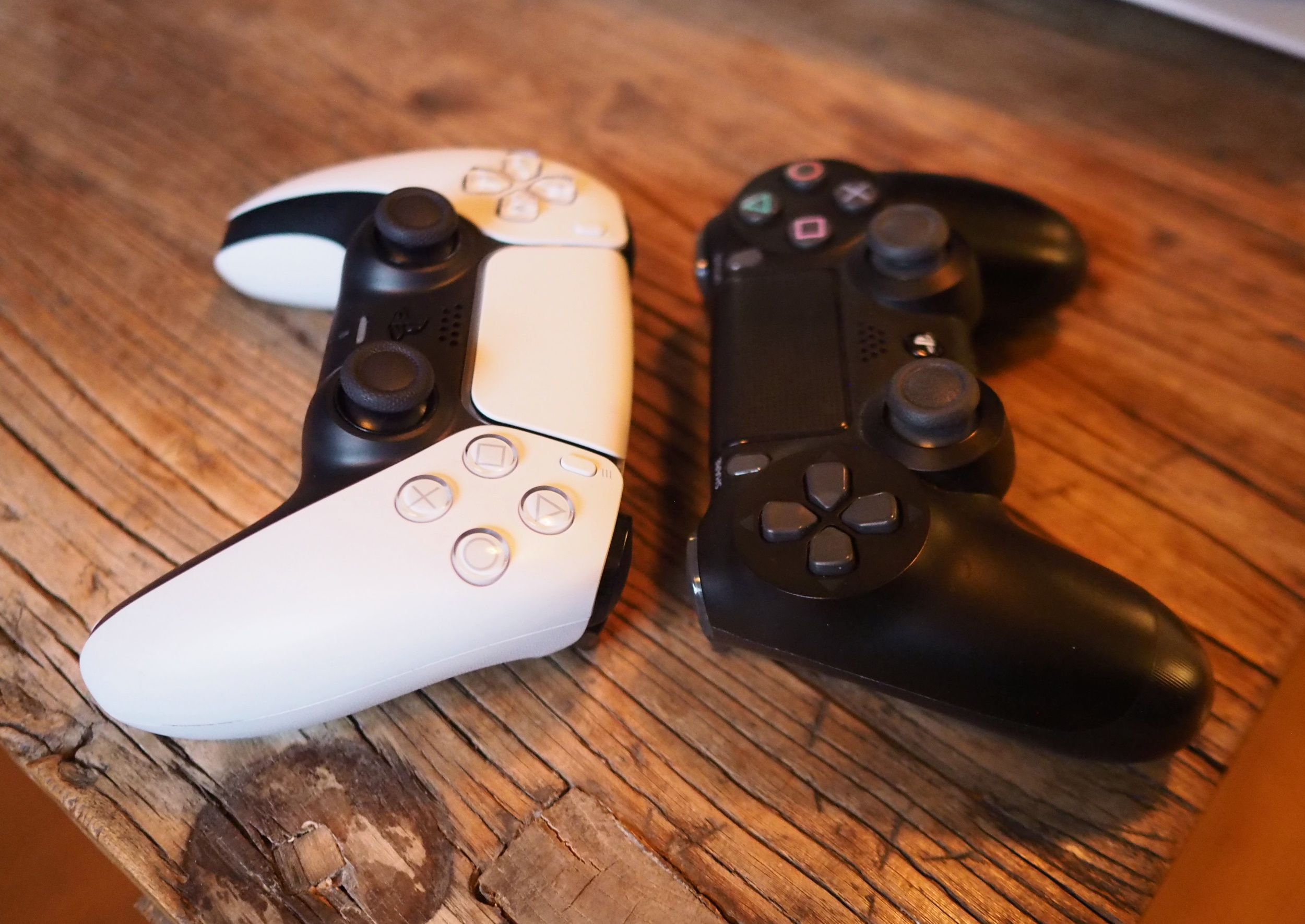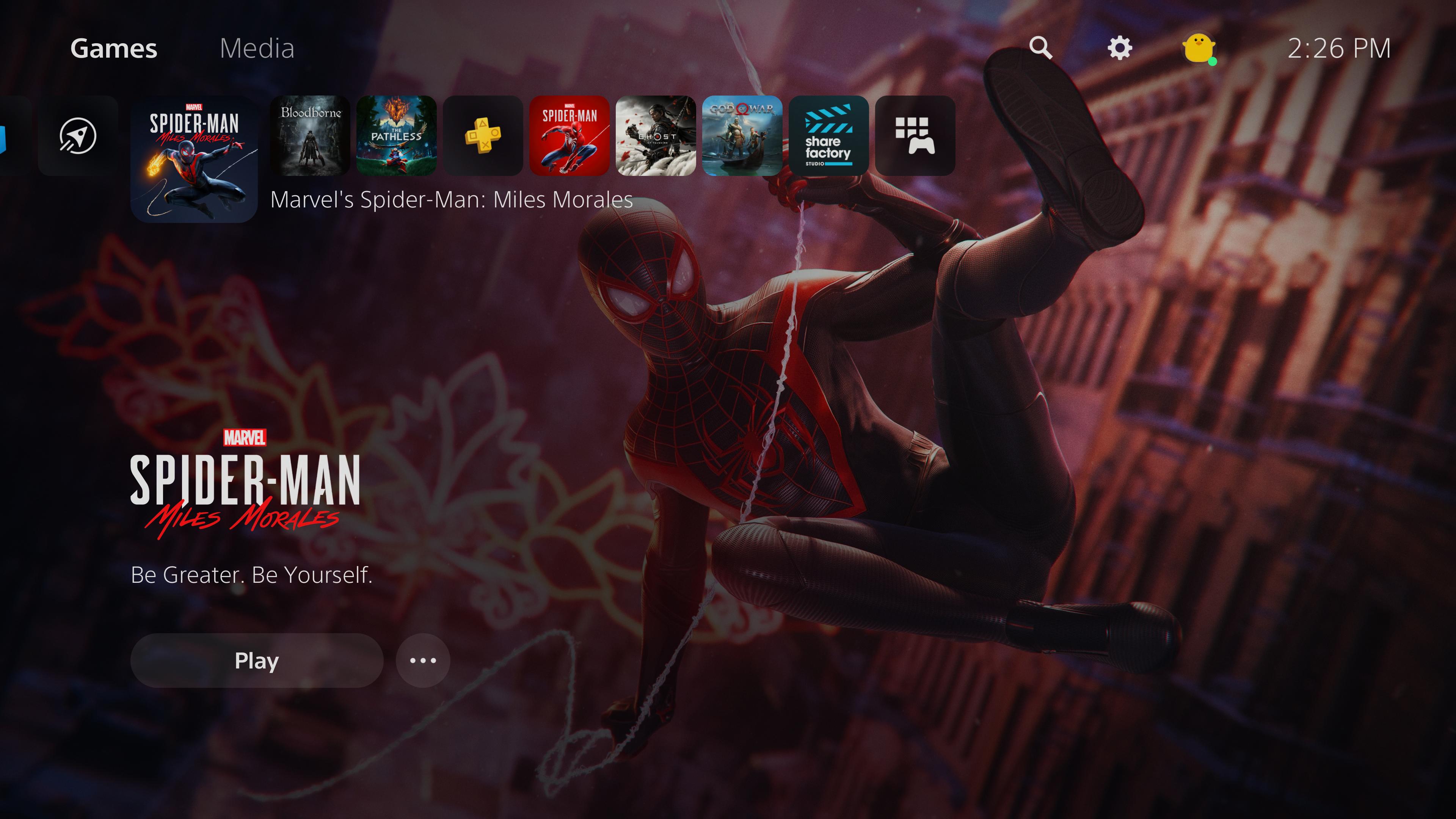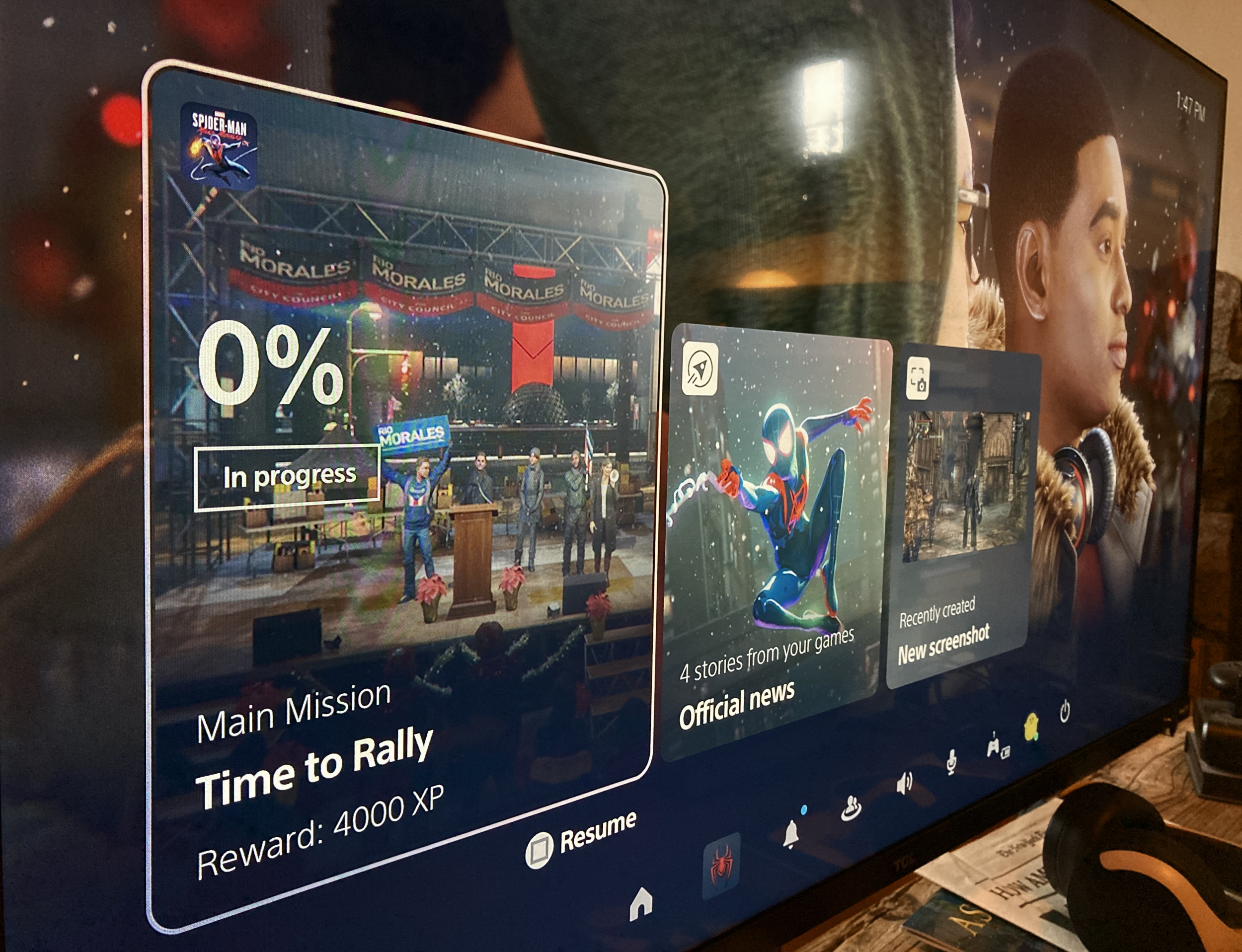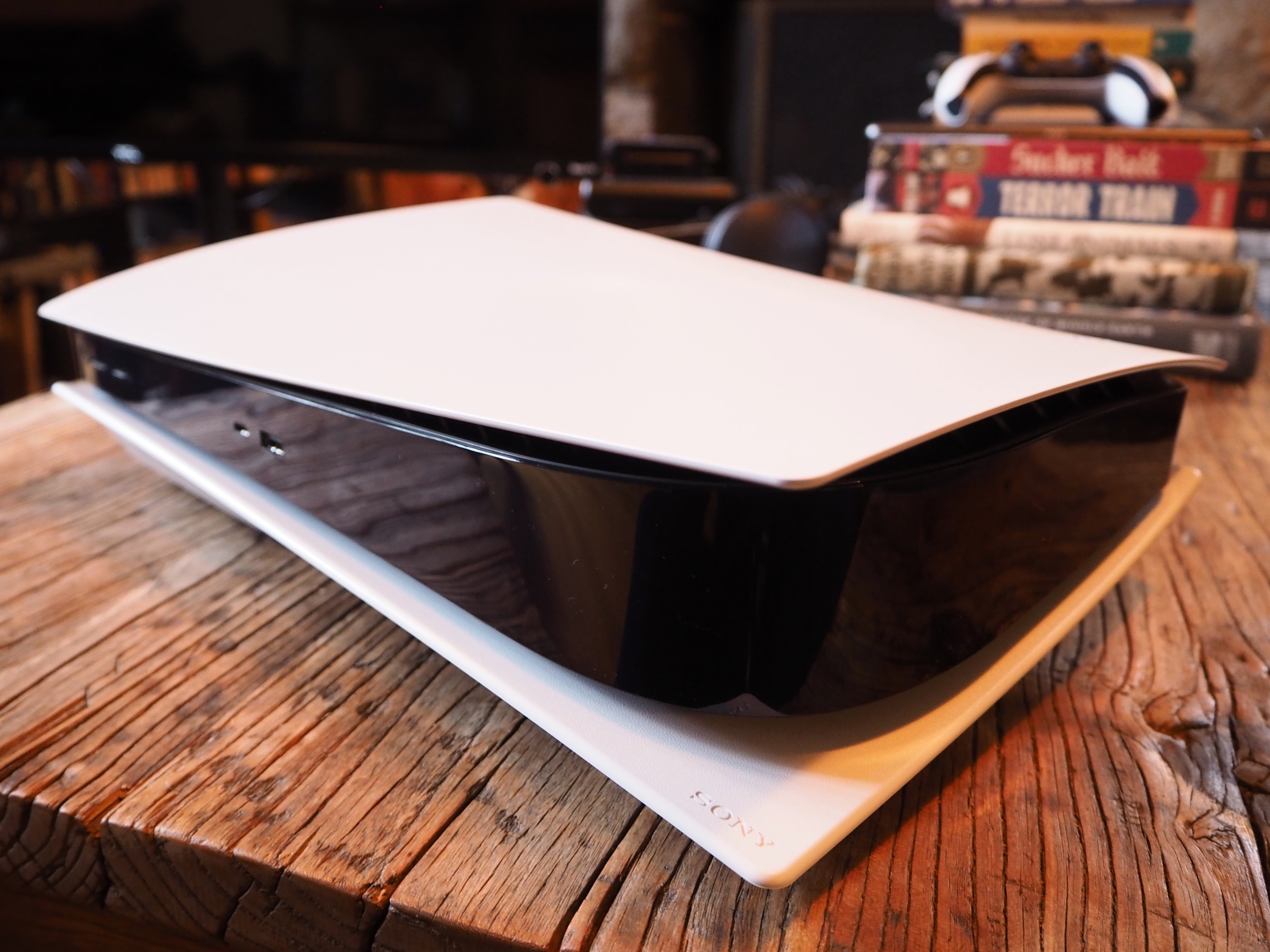TechCrunch
TechCrunch
Still, Sheel Mohnot, who was formerly a general partner at the fintech fund of 500 Startups, and Jake Gibson, co-founder of personal finance startup NerdWallet, were a little taken aback by investor interest in their fintech-focused early-stage venture firm, Better Tomorrow Ventures, or BTV.
The outfit just closed its debut fund with $75 million in capital commitments, exceeding their original $60 million target, and even one of their earliest investors, Michael Kim of Cendana Capital, expresses surprise. “Remarkably, they raised a lot of it during Covid,” says Kim.
We talked yesterday with the pair, who have already invested in 13 startups with the fund’s capital and, they say, led nine of those deals.
TC: The good news is you’re focused on fintech. The bad news is that fintech valuations are going through the roof. How do you compete?
SM: It’s true. Everybody decided that what we’ve been talking about all along is in line with their beliefs too, after exits like Plaid and Credit Karma. Everybody became a fintech investor. And you’re right that that has led to an increase in valuations. To some extent that’s good, though. It’s meant that one of our companies has already had a pretty massive markup in part because of this phenomenon.
I also think we’re finding we’re able to win deals at better prices because we’re both founders. [Mohnot sold a company, FeeFinders, to Groupon 2012]. And all we do is fintech. So we tend to understand better what founders are building than generalist investors.
JG: I do think [these things] resonate in that we’ve been able to pay prices that we think make sense and to get the ownership we want. This isn’t the 4 on 16 game that others are playing (where VCs invest $4 million at a pre-money valuation and so own 20% of the company). I think all but one or two of our investments involve repeat founders who see the value of working with partners like us.
TC: How much ownership are you targeting for that first check — 10%?
JG: Right, 10%, though we’re really shooting for 12%.
TC: And will you turn to [special purpose vehicles] to maintain your stake if certain companies begin to gain traction?
JG: Yes, I’ve done quite a bit of SPVs in the past. I’ve invested in 90 companies as an angel investor and I think we’ve probably deployed more than $40 million between the two of us over the last five years leading up to BTV, including SPVs on top of angel investments. [Editor’s note: some of those earlier deals include Chipper Cash, Albert, Clear Cover, and Hippo.]
TC: What companies are in BTV’s portfolio?
SM: None have been announced.
TC: Not one?!
SM: Nobody announces their seed rounds anymore. When I started my company, I wanted as much coverage as possible. I thought that was great for the company. Now founders don’t feel that way, with very few wanting to announce.
TC: But there are benefits to recruiting and getting on the radar or later-stage investors. Why eschew it altogether?
JG: Competition to some extent. They don’t want people to know what they’re working on because once you see a competitive seed round, you see a lot of other startups pop up to do the same thing. I also just think there’s not as much upside anymore to announcing, so most founders, when you’re seeing their seed round, it’s because they’re about to raise their Series A. The data you’re seeing in Pitchbook is typically six months [behind].
TC: Who are your investors?
SM: We have founders of fintech unicorns. We have a couple of fintech venture funds, fintech-focused GPs from later-stage funds, a few insurance companies, and Wall Street people who help us keep track on that side of the market, as well.
JG: We’re also backed by kind of a who’s who of fund of funds that back emerging managers: Cendana, Industry Ventures, Vintage [Investment Partners], Invesco.
TC: Did you know a lot of these investors before the pandemic shut down everything?
JG: Some, but we had to sell a lot of them cold over Zoom. We held a first close last December — that capital was from Cendana and individuals. We’d started conversations with other institutions at that point but everyone said it would take a while and that institutions won’t come until you raise your second fund, so we didn’t have high hopes that we’d get a lot of them on board.
In fact, when March and April hit, we figured we’d have to raise a smaller fund. But then things re-opened, people got back to work, and we were able to close institutions we’d started conversations with. Then people came out of the woodwork, because tech got hot fast but especially fintech, with all the IPO and M&A activity. People said, ‘We want fintech exposure now, and we want to invest in a fintech-focused fund, and you’re the only game in town.’
TC: What do you need to see to write a check?
JG: Our thesis is that everything is fintech, so we invest across the board: payments, lending, banking, real estate, insurance, b2b, consumer — anything that’s ostensibly fintech. We think a lot of companies that aren’t typically fintech today will look like fintech later, with more and more tech platforms that get into financial services. We’re investing at the pre-seed and seed stage but also meeting with founders at the idea stage, sometimes to talk them out of starting another neobank. [Laughs.]
TC: Do you? Every time I wonder how many neobanks make sense in this world, an investor tells me that if only their startup can get .00001% of the market, they’ll have a multibillion company on their hands.
JG: No. Most will never figure out how to get profitable. A lot of investors like to argue that with neobanks, you lose money on every trade but you make it up in volume. Yet very few have a path to getting to positive economics. You need huge scale to get to profitability, and that means you have to spend a ton of venture capital on marketing. More, a lot are going after audiences that are already over-served by traditional financial products.
SM: The same is true for “Plaid for X” type companies. After the announcement of Plaid’s exit — or what we all thought was Plaid’s exit — we looked at five companies, many of them hitting on the same ideas and duking it out for the same customers.
TC: Will the fact that the DOJ is suing to block Plaid’s sale to Visa, citing Visa’s monopoly power, have a chilling effect?
JG: We haven’t seen that. A lot of people are discounting that complaint and thinking it will get out of this in the end via SPAC. The company was doing north of $100 million in revenue, and given where these businesses trade, Plaid could go public and see an amazingly successful outcome.
It’s not just Plaid, by the way. There are now 40 SPACs that are focused on fintech alone. Just think about the outcomes that have to happen in the next two years.
]]>
TechCrunch
TechCrunch
Apple has never been a particular budget-conscious company when it comes to hardware — terms like “Apple tax” don’t spring out of nothing. But the last few years have seen the company soften that approach in an effort to appeal to users outside its traditional core of creative professionals. The iPhone and Apple Watch have both seen the company more aggressively pushing to appeal to entry-level users. It only follows that it would follow suit with its smart speaker.
Couple that with the fact that the Echo Dot and Google/Nest Home minis pretty consistently rate as the best-selling smart speakers for their respective company, and arrival of a HomePod Mini was all but inevitable, as Apple looks to take a bite out of the global smart speaker market, which currently ranks Amazon and Google at around 40% a piece. It’s going to be an uphill battle for the HomePod, but the Mini is, simply put, its strongest push in that direction to date.
Launched in early 2018 (after delays), the HomePod was a lot of things — but no one ever claimed it was cheap (though no doubt they found a way to spin it as a good deal). The $349 price tag (since reduced to $299) was hundreds of dollars more than the most expensive models from Amazon and Google. The HomePod was a premium device, and that was precisely the point. Music has always been a cornerstone of Apple’s philosophy, and the HomePod was the company’s way of embracing the medium without cutting corners.
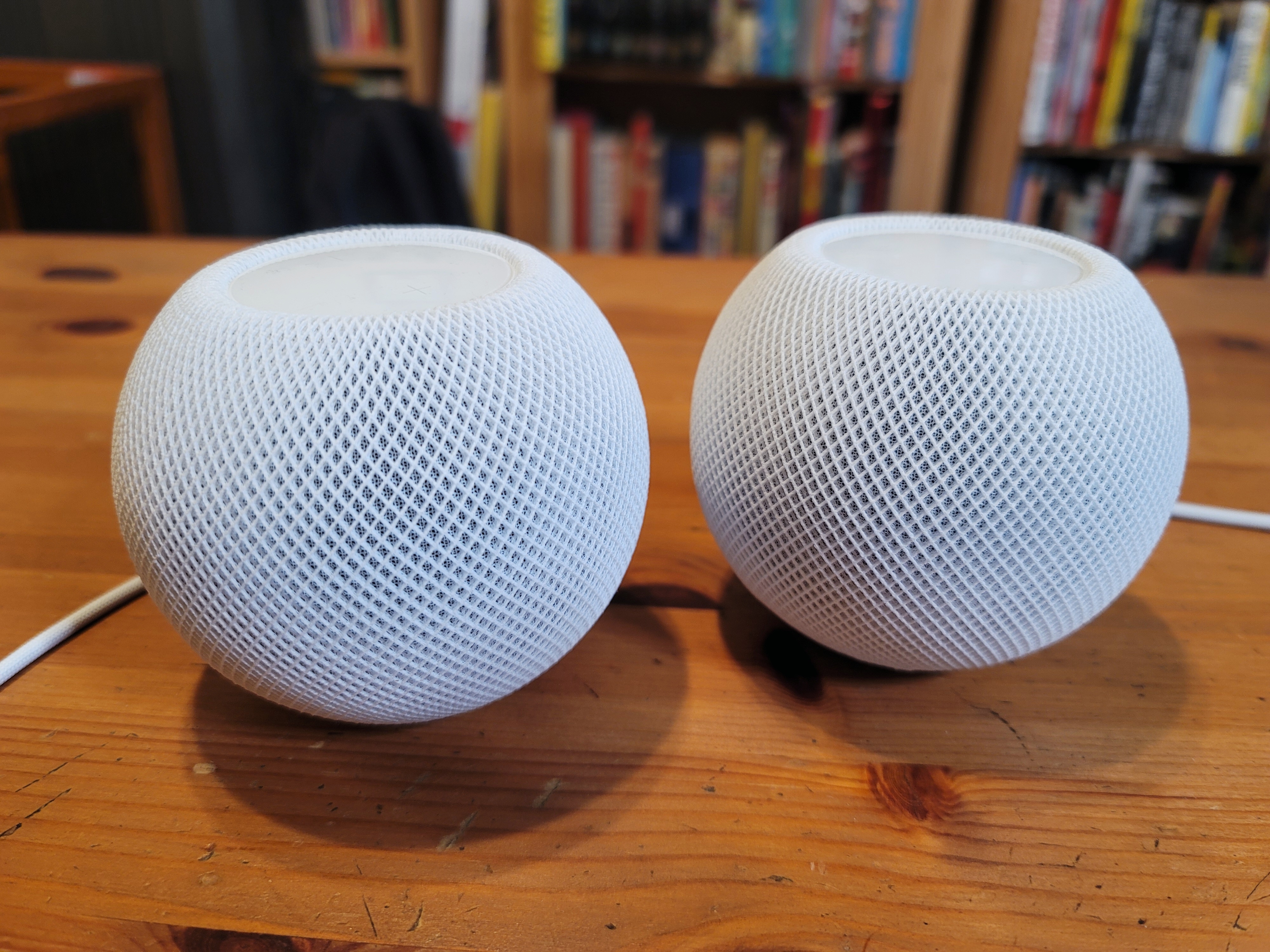

Image Credits: Brian Heater
As Matthew wrote in a David Foster Wallacesque “four sentence” review, “Apple’s HomePod is easily the best sounding mainstream smart speaker ever. It’s got better separation and bass response than anything else in its size and boasts a nuance and subtlety of sound that pays off the seven years Apple has been working on it.”
He called it “incredibly over-designed and radically impressive,” while bemoaning limited Siri functionality. On the whole, the HomePod did a good job in being what it set out to be — but it was never destined to be the world’s best-selling smart speaker. Not at that price. What it did do, however, was help convince the rest of the industry that a smart speaker should be, above all, a speaker, rather than simply a smart assistant delivery device. The last several generations of Amazon and Google products have, accordingly, mostly brought sound to the forefront of product concerns.
Essentially, Amazon and Google have become more focused on sound and Apple more conscious of price. That’s not to say, however, that the companies have met somewhere in the middle. This is not, simply put, the Apple Echo Dot. The HomePod Mini is still, in many ways, a uniquely Apple product. There’s a focus on little touches that offer a comparably premium experience for its price point.
That price point being $99. That puts the device in league with the standard Amazon Echo and Google Nest, rather than their respective budget-level counterparts. Those devices run roughly half that price and are both fairly frequently — and quite deeply — discounted. In fact, those devices could nearly fall into the category of loss leaders for their respective companies — dirt-cheap ways to get their smart assistants into users’ homes. Apple doesn’t appear particularly interested in that approach. Not for the time being, at least. Apple wants to sell you a good speaker.
And you know what? The HomePod Mini is a surprisingly good speaker. Not just for its price, but also its size. The Mini is nearly exactly the same size as the new, round Echo Dot — which is to say, roughly the size of a softball. There are, however, some key differences in their respective designs. For starters, Amazon moved the Echo’s status ring to the bottom of the device, so as to not impede on its perfectly spherical design. Apple, on the other hand, simply lopped off the top. I was trying to figure out what it reminds me of, and this was the best I came up with.
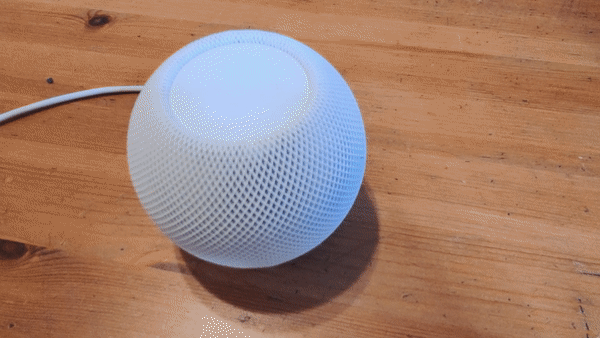

Image Credits: Brian Heater
The design decision keeps the product more in line with the original HomePod, with an Aurora Borealis of swirling lights up top to show you when Siri is doing her thing. It also allows for the inclusion of touch-sensitive volume buttons and the ability to tap the surface to play/pause music. Rather than the fabric-style covering that has dominated the last several generations of Google and Amazon products, the Mini is covered in the same sort of audio-conductive mesh material as the full-size HomePod.
The device comes in white or space gray, and unlike other smart speakers, seems to be less about blending in than showing off. Of course, being significantly smaller than the HomePod makes it considerably more versatile. I’ve been using one of the two Minis Apple sent on my desk at home, and it’s an ideal size. On the bottom is a hard plastic base with an Apple logo.
There’s a long, non-detachable fabric cable. It would be nice if the cord was user-detectable, so you can swap it out as needed, but no go. The cable sports a USB-C connector, however, which makes it fairly versatile on that end. There’s also a 20W power adapter in the box (admittedly, not a sure bet with Apple, these days). It’s disappointing — but not surprising that there’s no auxiliary input on-board — there wasn’t one on the standard HomePod, either.
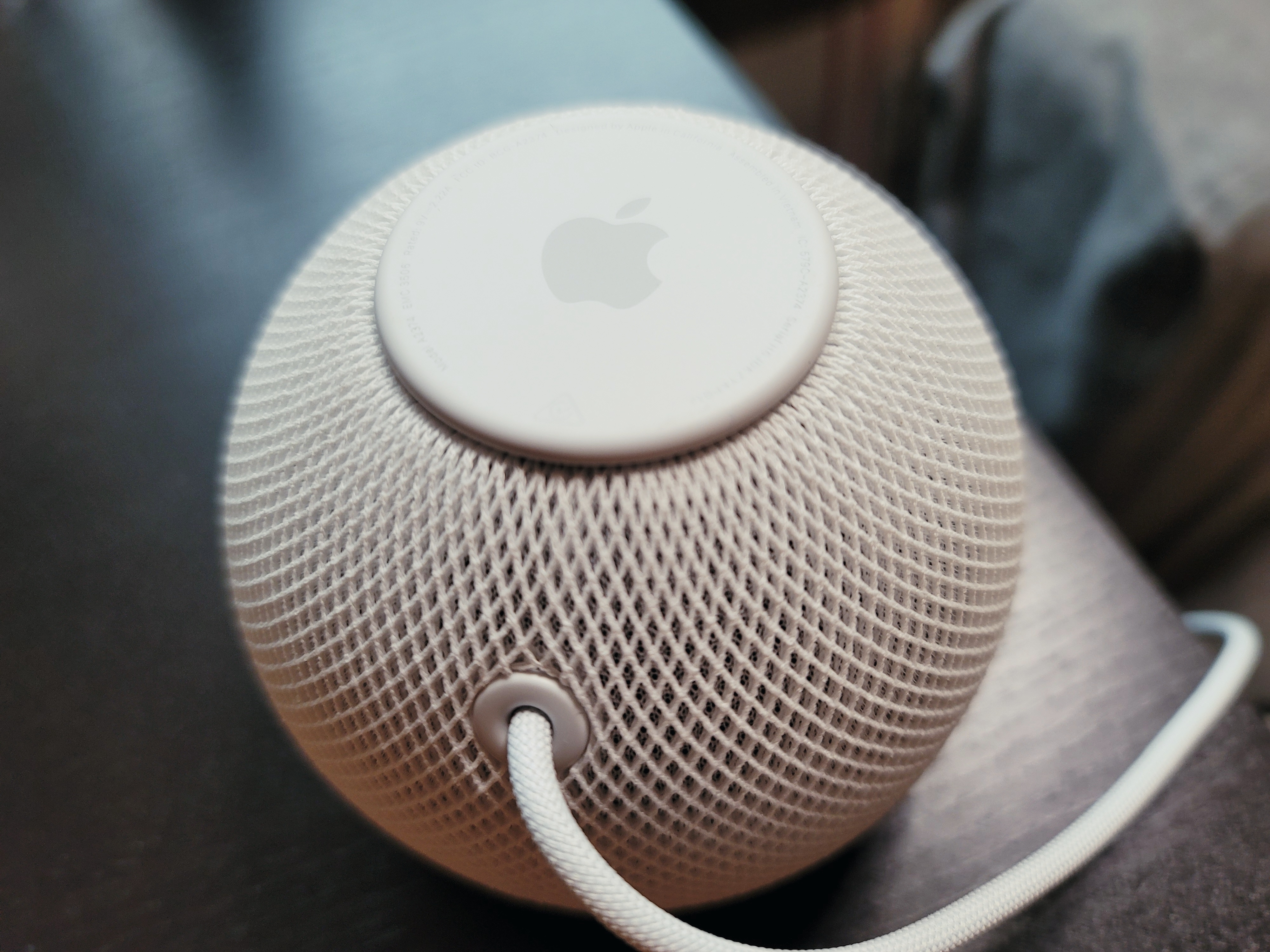

Image Credits: Brian Heater
Where Amazon switched to a front-facing speaker for the new Echo, Apple continues to focus on 360-degree sound. Your preference may depend on where you place the speaker, but this model is more versatile, especially if you’re not just seated in front of the speaker all day. I’ve used a lot of different smart speakers in my day, and honestly, I’m really impressed with the sound the company was able to get out of the 3.3-inch device.
It’s full and clear and impressively powerful for its size. Obviously that goes double if you opt for a stereo pair. Pairing is painless, out of the box. Just set up two devices for the same room of your home and it will ask you whether you want to pair them. From there, you can specify which one handles the right and left channels. If you’d like to spread out, the system will do multiroom audio by simply assigning speakers to different rooms. From there, you can just say, “Hey Siri, play music in the kitchen” or “Hey Siri, play music everywhere.” You get the picture.
In fact, the whole setup process is pretty simple with an iPhone. It’s quite similar to pairing AirPods: hold the phone near the speaker and you’ll get a familiar white popup guiding you through the process of setting it up, choosing the room and enabling voice recognition.
The speakers also get pretty loud, though if you need clear sound at a serious volume, I’d strongly recommend looking at something bigger (and pricier) like the original HomePod. For the living room of my one-bedroom in Queens, however, it does the trick perfectly, and sounds great from pretty much any angle in the room.
As a smart assistant, Siri is up to most of the basic tasks. There are also some neat tricks that leverage Apple’s unique ecosystem. You can, say, ask Siri to send images to your iPhone, and it’ll oblige, using Bing results. The fact of the matter is, however, that Amazon and Google got a pretty major head-start on the smart home assistant front and Apple is still catching up.
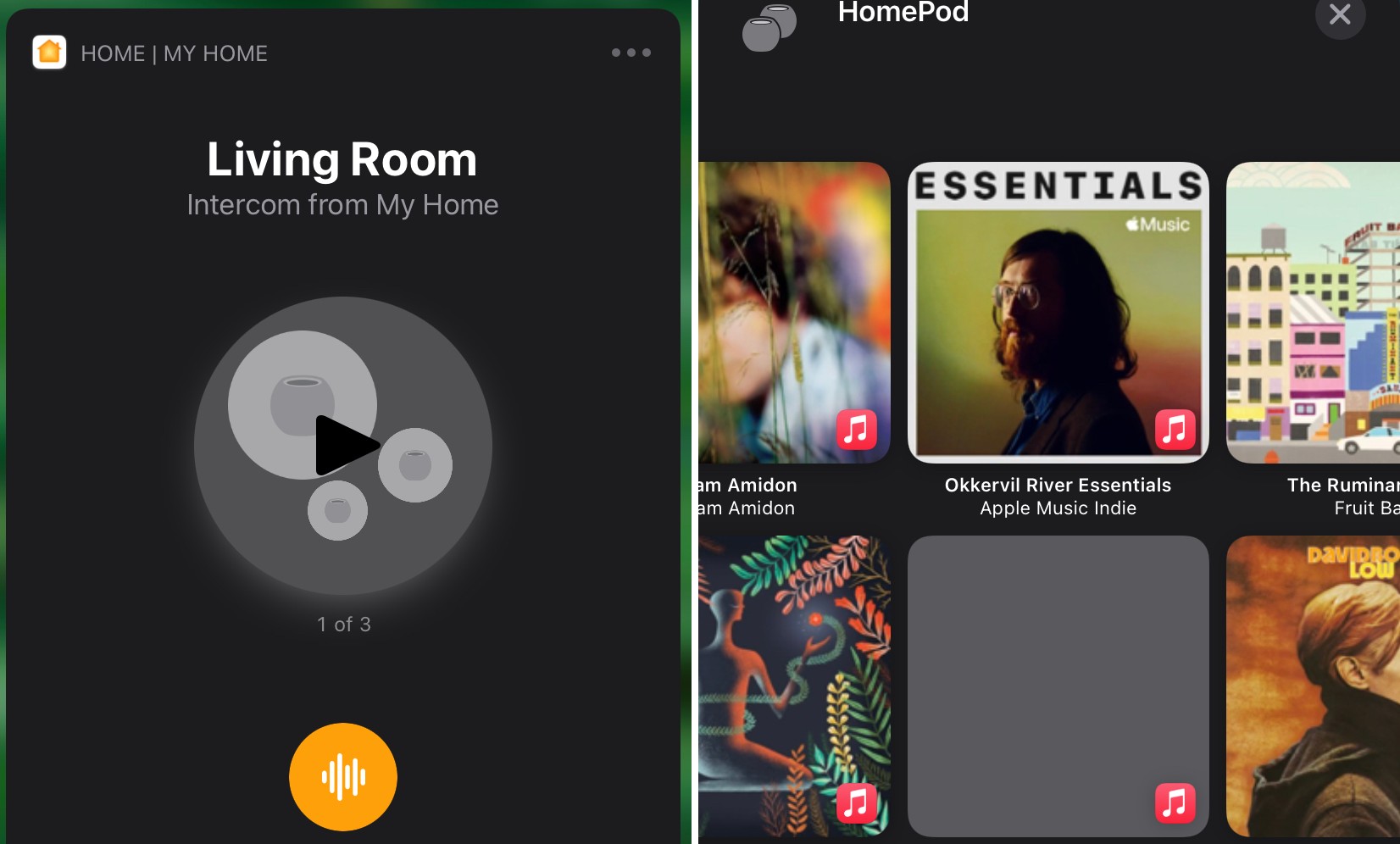

Image Credits: Brian Heater
There have, however, been some key strides of late — particularly as it pertains to Home/HomeKit. The last couple of iOS updates have brought some solid smart home updates; 14.1 brought intercom functionality specifically for HomePods and 14.2 extends that to other other devices. So you can say, “Hey Siri, intercom everyone, dinner is ready,” and beam it to various devices. The feature joins similar offerings from Amazon and Google, but does so on a wide range of (Apple) products, sending a pre-recorded snippet of your voice to the devices.
The system works out of the box with HomeKit-compatible devices — it’s a small list, compared to what’s currently offered for Alexa and Google Assistant, but it’s growing. You can check out the entire list of compatible smart home devices here.
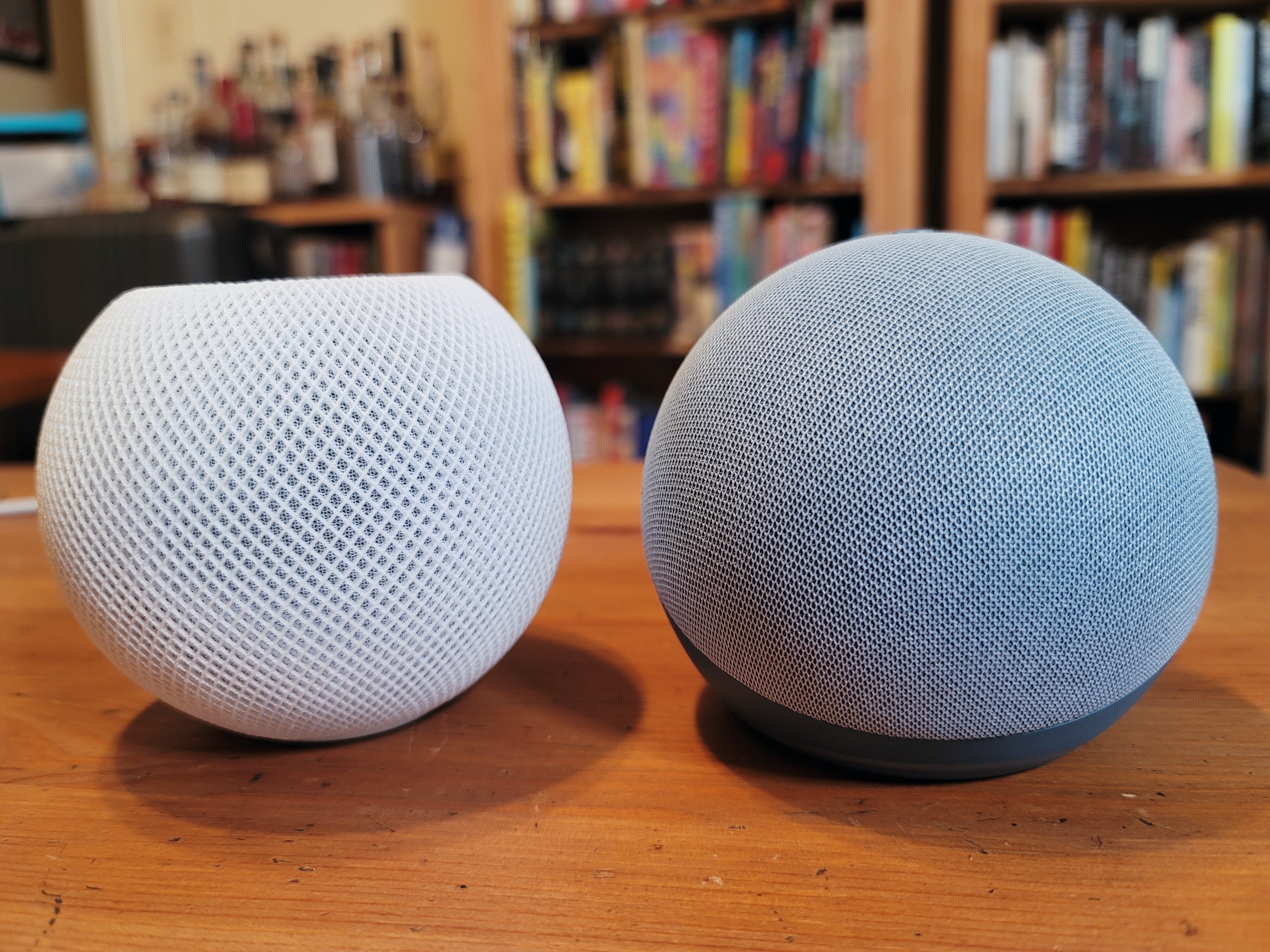

Image Credits: Brian Heater
I found the voice recognition to be quite responsive to voice, even when the music is playing loud. Beyond Siri, there are a couple of ways to interact with the device. In addition to a single tap on the top to play/pause, a double-tap advances the track, triple-tap goes to the previous track and touching and holding fires up Siri. Unlike other smart speakers, there’s no physical button to turn off the mic — and you can’t ask Siri to do this either. The device is only listening for a “hey Siri” trigger and audio isn’t stored, but the feature would be nice for additional peace of mind.
You can also control music from your iPhone using AirPlay 2. That’s my preferred method, because I’m a bit of a micromanager when it comes to music. You’ll need to hit the AirPlay button to do that — or you can simply hold the iOS device near the HomePod Mini to take advantage of handoff using the U1 chip (iPhone 11 or later). That’s a neat little trick.
As someone who’s more accustomed to using Spotify than Apple Music, one thing that tripped me up a bit, however, is that when you ask the HomePod to play music, it will pick up from the last time you verbally requested playback, rather than treating all of your Apple Music listening sessions as a single stream. I prefer Spotify’s unified cross-device approach here.


Image Credits: Brian Heater
That said, a nice little iOS 14.2 addition brings your aggregated listening history (Apple Podcasts and Music) to a single stream accessible by long-pressing your HomePod in the Home app. From there you can tap on an album or podcast to automatically send them to the smart speaker.
All told, I’ve quite enjoyed my time with the little smart speaker. As I noted at the top, it’s hard not to wonder what might have been if Apple had launched the Mini alongside the initial HomePod. I suspect the company would still be a ways from market share domination, but the product really could have eaten into Amazon and Google’s lead. Instead, Apple waited — likely in hopes of getting the package right. That’s certainly understandable. Apple’s never been one to rush into a product, and the HomePod Mini sounds all the better for it.
]]>
TechCrunch
TechCrunch
“Political parties may legitimately hold personal data belonging to millions of people to help them campaign effectively. But developments in the use of data analytics and social media by political parties mean that many voters are unaware of how their data is being used,” the Information Commissioner’s Office (ICO) warned today.
“All political parties must be clear and transparent with people about how their personal data is used and there should be improved governance and accountability,” it goes on to say in the report.
“Political parties have always wanted to use data to understand voters’ interests and priorities, and respond by explaining the right policies to the right people. Technology now makes that possible on a much more granular level. This can be positive: engaging people on topics that interest them contributes to greater turnout at elections. But engagement must be lawful, especially where there are risks of significant privacy intrusion – for instance around invisible profiling activities, use of sensitive categories of data and unwanted and intrusive marketing. The risk to democracy if elections are driven by unfair or opaque digital targeting is too great for us to shift our focus from this area.”
Despite flagging risks to democratic trust and engagement the regulator has chosen not to take enforcement action.
Instead it has issued a series of recommendations — almost a third of which are rated ‘urgent’ — saying it will carry out a further review later this year and could still take action if enough progress isn’t made.
“Should our follow-up reviews indicate parties have failed to take appropriate steps to comply, we reserve the right to take further regulatory action in line with our Regulatory Action Policy,” it notes in the report which also includes warm words for how “positively” parties have engaged with it on the issues.
The ICO also says it will update its existing guidance on political campaigning later this year — which it notes will have wider relevance for (non-political) campaigners, pressure groups, data brokers and data analytic companies.
It has previously put out guidance for the direct marketing data broking sector as part of its follow up to the Cambridge Analytica Facebook data misuse scandal.
From Cambridge Analytica to ‘must do better’
The data audit of UK political parties was instigated by the ICO after the Cambridge Analytica scandal drew global attention to the role of social media and big data in digital campaigning.
In an earlier report on the topic, in July 2018, the ICO called for an ‘ethical pause’ around the use of microtargeting ad tools for political campaigning — warning there’s a risk of trust in democracy being undermined by a lack of transparency around the data-fuelled targeting techniques being applied to voters.
But there was no let up in the use of social media targeting before or during the 2019 UK general election, when concerns about how Boris Johnson’s Conservative Party was using Facebook ads to harvest voter data were among the issues raised.
The ICO report is determined to spare parties’ individual blushes, however — it’s only summarized ‘aggregated’ learnings from its deep dive into wtaf the Conservative Party; the Labour Party; the Liberal Democrats; the Scottish National Party (SNP); the Democratic Unionist Party (DUP); Plaid Cymru; and United Kingdom Independence Party (UKIP) are doing with people’s data.
Nor is the regulator handing out the marching orders, exactly.
“We recommended the following actions must be taken by the parties”, is the ICO’s preferred oxymoronic construction as it seeks to avoid putting any political noses out of joint. (Not least those belonging to people in government.) So it’s opting for a softly, softly ‘recommend and review’ approach to trying to clean up parties’ dubious data habits
Among its key findings are that political parties’ privacy notices are falling short of required levels of transparency and clarity; don’t have appropriate lawful bases for the data they’re processing in all cases, and where they’re claiming consent may not be obtaining this legally; aren’t being up front about how they’re combining data to profile voters, nor are they carrying out enough checks on data suppliers to ensure those third parties have legally obtained people’s data; aren’t putting proper contractual controls in place when using social media platforms to target voters; and are not staying on top of their obligations so as to be in a position to demonstrate accountability.
So quite the laundry list of data protection failings.
The ICO’s recommendations to political parties are also hilariously basic — saying they must:
- undertake an information audit or data-mapping exercise to help find out what personal data they hold and where it is;
- conduct a review to find out why they are using personal data, who they share it with and how long it is kept, by distributing questionnaires to relevant areas, meeting directly with key business functions and reviewing policies, procedures, contracts and agreements;
- document their findings in writing, in a detailed and meaningful way.
Insert your own face-palm emoji as you imagine the chaotic evil underlying those bullet points.
“We recognise that achieving effective transparency to the UK adult population is challenging,” the ICO notes in a section of the report on transparency requirements, adding that its earlier report recommended “wider, joined-up approaches should be also taken to raising awareness of how data is used in campaigning”.
It adds that it will continue to work with the Electoral Commission on this recommendation.
The explosive growth of digital ads for UK political campaigning is quantified by a line in the report citing Electoral Commission data showing 42.8% of advertising spending by campaigners was on digital advertising in 2017, compared to just 1.7% in 2014.
So the use of social media platforms — which the report notes were used by all parties for political campaigning — is chain-linked to the troubling lack of transparency being called out by the regulator.
“Social media was used by all parties to promote their work to people who may be interested in their values. The majority was delivered via Facebook — including their Instagram platform — and Twitter. Where political parties were using audience choice tools, we had concerns with the lack of transparency of this practice,” the ICO writes. “Privacy information did not make it clear that personal data of voters collected or processed by the party would then be profiled and used to target marketing to them via social media platforms.
“A key recommendation made following our audits was that parties must inform individuals and be transparent about this processing, so that voters fully understand their personal data will be used in this way to comply with Article 13(1)(e) of the GDPR. For example, parties should tell voters that their email addresses will be used to match them on social media for the purposes of showing them political messaging.”
“Due diligence should be undertaken before any campaign begins so that parties can assure themselves that the social media company has: appropriate privacy information and tools in place; and the data processing they will be doing on the party’s behalf is lawful and transparent, and upholds the rights of individuals under data protection law,” it adds.
The report also discusses the need for political parties to fully understand the legal implications of using specific data-fuelled ad-targeting platforms/tools (i.e. before they rush in and upload people’s data to Facebook/Twitter) — so they can properly fulfil their obligations.
To wit:
When parties look to use a platform’s targeting tools, both the party and the platform itself should clearly identify the circumstances where joint controllership exists and put measures in place to fulfil those obligations. They must assess this on a case-by-case basis, irrespective of the content of any controller or processor arrangement. Joint controllership may exist in practice, if the platform exercises a significant degree of control over the tools and techniques they use to target individual users of their service with political messages on behalf of the party.
Article 26 of the GDPR specifies the requirements for joint controller situations. Parties should agree and fully understand who is responsible for what. This means they must work with any social media platform they use to make sure there are no gaps in compliance, and ensure they have appropriate contracts or agreements in place. They should also undertake in-life contract monitoring to ensure that the platforms are adhering to these contracts.
In the report, the ICO describes the data protection implications involved in joint controller situations as “complex”, adding: “We recognise that the solutions to the issues… may take more time to resolve and will require more guidance for all the actors involved.”
“Since our audits, we understand that some steps have been taken by social media companies within their revised terms and conditions of service for digital advertising,” it adds.
The report also includes a passing nod to regulatory scrutiny of Facebook’s ad platform in Ireland under EU law — focused on concerns that the use of Facebook’s ‘lookalike audiences’ for targeting voters may not comply with the bloc’s GDPR framework. Information commissioner, Elizabeth Denham, has previously suggested the tech giant will have to change its business model to maintain user trust. But Ireland’s data protection agency has not yet issued any GDPR decisions related to Facebook’s business.
“In the wider ecosystem, the ICO also recognises that there are still other matters that need to be addressed about the use of personal data in the political context,” the regulator writes now. “These include some of the issues set out in the report it made to the Irish Data Protection Commission (IDPC), as the lead authority under GDPR, about targeted advertising on Facebook and other issuing [sp] including where the platform could be used in political contexts. The ICO will continue to liaise with the technology platforms to consider what, if any, further steps might be required to address the issues raised by our Democracy Disrupted report. This will be of relevance to the parties’ use of social media platforms in future elections.”
]]>
TechCrunch
TechCrunch
In the latest development, Kuda, a startup out of Nigeria that operates a popular mobile-first challenger bank for consumers and (soon) small businesses, is announcing that it has raised $10 million — the biggest seed round ever to be raised in Africa. The funding comes on the back of strong demand for its services and its ambitions — according CEO Babs Ogundeyi — to become the go-to bank not just for those living on the continent, but for the African diaspora.
“We want to bank every African on the planet, wherever you are in the world,” he said in an interview. It’s starting first in its home market: since launching in September 2019, it has picked up around 300,000 customers — first consumers and now also small businesses — and on average processes over $500 million of transactions each month.
The $10 million is being led by Target Global, the giant VC out of Europe, with Entrée Capital and SBI Investment (once part of SoftBank, now no longer) also participating, along with a number of other notable individual fintech founders and angels.
The list includes Raffael Johnen (founder of Auxmoney), Johan Lorenzen (founder of Holvi), Brandon Krieg/Ed Robinson (founders of Stash), and Oliver and Lish Jung (angel investors in Nubank, Revolut, and Chime).
Prior to this Kuda — which is co-founded by Ogundeyi and CTO Musty Mustapha — had raised $1.6 million in a pre-seed round to launch a beta of its service, and Ogundeyi said he’s already working on a much bigger Series A. No valuation is currently being disclosed.
In a year where many have been watching the world economy with some trepidation on the back of a raging health pandemic hitting multiple geographies, fintech in Africa has been in the spotlight of late.
Most recently, Paystack — a payments startup out of Nigeria — got acquired by Stripe for over $200 million, making it not only Stripe’s biggest acquisition, but the largest exit-by-acquisition to-date for any Nigerian startup. That news followed closely on the heels of Interswitch, another payments startup, hitting a $1 billion valuation on the back of an investment from Visa.
But in truth, startups focused around the business of financial transactions — which also includes the adjacent industry of e-commerce (See: Jumia, the first venture-backed startup out of the region to go public) have been some of the most eagerly-watched, and their services mostly widely-adopted, of all tech plays in the region.
The reason is logical. As a contintent, Africa is one of the most populous, yet one of the more underdeveloped economically, continents in the world. And in our modern times, digital inclusion has become synonymous with financial inclusion. So, as the population begins to adopt mobile technology in earnest, those users represent a big opportunity: there is pent-up demand, and competition is relatively sparse.
That has meant a number of efforts, leveraging the growth in mobile phone usage to provide services to people to make transactions beyond those that they would otherwise only do in person, using cash. These have included innovative services like Mpesa, which uses a person’s phone (which can be a basic feature phone) as a proxy for a bank account, allowing people to pay in and pay out using their phone numbers and prepay accounts.
Nigeria — currently the biggest single economy in Africa — has also been at the center of a lot of fintech activity, and Kuda has been taking that opportunity by the horns.
In its case, that has started with building Kuda’s footprint from the ground up.
The rise of the challenger bank has been one of the more interesting developments in the world of consumer fintech, with companies like N26, Monzo, Starling, Chime, NuBank and Revolut finding a lot of traction with younger users.
But unlike many of these, Kuda does not partner with other banks to manage and back deposits with the challenger bank to in turn focus on customer service, and building user-friendly experiences and value-added services around money management. Instead, Kuda has obtained a microfinance banking license from the central bank of Nigeria.
This means that it manages payments, transfers, issues debit cards (in partnership with Visa and Mastercard). It also, he said, has partnerships with the incumbent banks Zenith Bank, Guaranteed Trust and Access Bank for people to come in for physical deposits and withdrawals when needed.
“We have built the core banking services in-house so we own the full stack,” he said. “It means we don’t have to piggy back on another financial institution. We may choose to partner on certain products but we don’t have to.” He added that the plan will be to get full licenses “in what we consider key regions” but possibly partner in others where the existing infrastructure makes it more logical to do so.
“The reason for the full license is because of monetization,” he added. “As a bank you need to be able to lend, and in Nigeria if you don’t have a full license it’s hard to lend and make money.”
Having an account is free, and so Kuda makes money through other services. Among them, users can top up their phones directly from the Kuda app (most accounts are prepaid), so Kuda acts as a kind of broker in that transaction and makes a percentage from it.
Users can also pay bill through the app, where Kuda also makes a percentage. And, like other banks, Kuda manages its float and invests it in treasury bills, mutual funds and soon other credit products. There are also fees collected from debit transactions but these are not the real focus, he said.
Kuda’s mobile-first interface is not unlike a lot of the new wave of banking services built around apps, including an aim to be more than just a “dumb box” for storing money.
In its case, Kuda uses machine learning to personalize every customer, Ogundeyi said, generating suggested budgets and savings plans for its users. “The plan for our credit service is that we will base how much we issue and at what terms based on your existing spending habits,” he said.
That focus on spending dovetails with the kind of customers that Kuda is targeting. Some 70% of Nigerians are under the age of 30, and they are “smart and entrepreneurial” said Ogundeyi.
Although a pared-down version of Kuda is available for feature devices — it lacks the AI-based money management features, for one thing — the startup is mainly targeting the segment of the population that is buying and using smartphones, have the kind of incomes and lifestyles that mean they are actively depositing and spending money, and — in an increasing number of cases — also running their own businesses. That overlap means that “targeting small business owners doesn’t deviate from our original business model of younger consumers too much,” he said.
While some users are already running some of their small business banking through Kuda, a more formal small business product, with more features tailored for those users, will be launched by Q1 2021, he said.
Nigerian potential, African promise
Ogundeyi said that despite the uncertainty many are feeling around the pandemic, the relative success of Kuda and the optimism around the future of challenger banks, helped the company close this seed round (and raise other money soon) relatively easily.
“The emergence of digital challenger banks, providing customers with a free, digital and significantly better banking experience compared to services offered by traditional banks, has seen huge success across the globe,” said Dr. Ricardo Schäfer, Partner at Target Global, in a statement. “Kuda is one of Africa’s leading digital challenger banks and one of the fastest growing fintechs on the continent. We are very excited to be working with Babs, Musty and the entire Kuda team to further build on the fantastic momentum they have had since inception and support them in taking the company to the next level.” He is joining Kuda’s board with this round.
“Kuda’s relentless drive and ability to execute quickly has allowed it to carve out a highly disruptive business model in the finance and banking industry,” added Avi Eyal, partner at Entrée Capital.
Funding for any startup from the continent is rare enough that stories around it must also be viewed in the context of the bigger challenges in general that African startups have with raising money in a global market, which seems to generally be heavily biased towards developed economies (and startups in specific regions like Silicon Valley) and more known-quantity founders (which often tends to skew to while males).
“Ultimately I think there is work to be done on both sides,” he said of investors, founders and the situation of building stronger African ecosystems. “On the side of investors, more of them need to appreciate the value of the continent. And from the entrepreneurial side, there is work to be done in understanding how investors invest to get them over the line.”
He thinks that having more investors from the continent itself could help.
“Unfortunately we don’t have many African investors. My belief is that people with money typically will give money to people they understand and connect with. It’s not a surprise that if you have gone through a certain establishment (work or school) it’s easier to get funding from someone who was in that organization,” he said. “My first investment came from a friend who was at school with me.”
Indeed, Ogundeyi knows something about the workings of capital from his own first-hand experience. He was actually born England to Nigerian parents, who eventually moved back to Nigeria but kept him in the UK going to British boarding schools and eventually university. Ogundeyi still splits his time between Lagos and London (which is where he was when we spoke last week). He says that he considers himself Nigerian first.
“Nigeria has the potential to be a great national economy if it’s well harnessed,” he said. “Tech is contributing significantly to that. That is why there is a lot of interest and why we are excited to be there.”
]]>
TechCrunch
TechCrunch
For everyone else — the potential upsizers — this review has only a single question to answer: Do the improvements in camera and screen size and potentially battery life make it worth dealing with the hit in handling ergonomics from its slim but thicc build?
The answer? Yes, but only in certain conditions. Let’s get into it.
Build
I’m not going to spend a ton of time on performance or go through a feature-by-feature breakdown of the iPhone 12 Pro Max. I’ve published a review of the iPhone 12 and iPhone 12 Pro here and just today published a review of the iPhone 12 mini. You can check those out for baseline chat about the whole lineup.
Instead, I’m going to focus specifically on the differences between the iPhone 12 Pro Max and the rest of the lineup. This makes sense because Apple has returned us to a place that we haven’t been since the iPhone 8.
Though the rest of the lineup provides a pretty smooth arc of choices, the iPhone 12 Pro Max introduces a pretty solid cliff of unique features that could pull some people up from the iPhone 12 Pro.
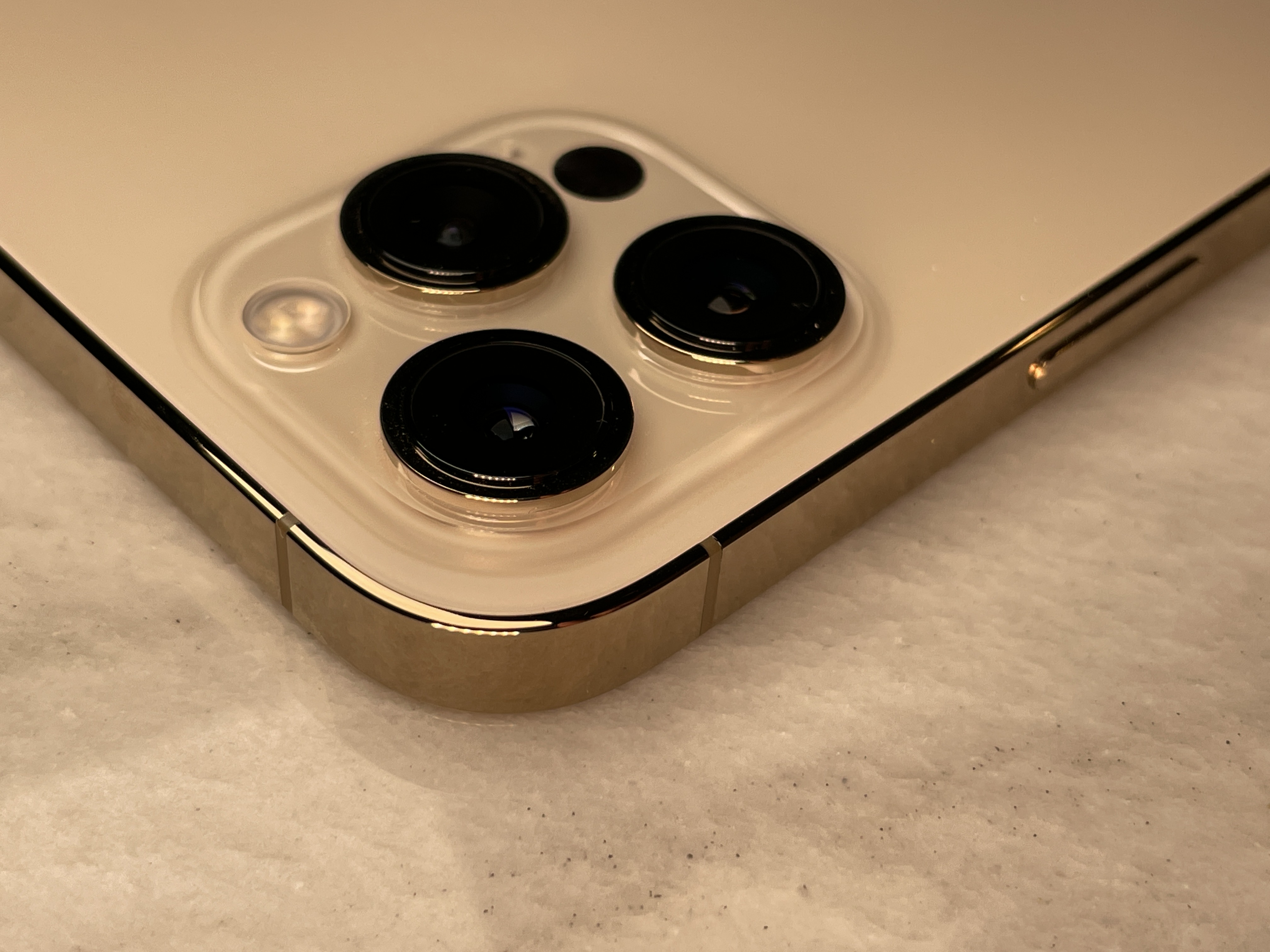

The larger size sets off all of the work Apple did to make the iPhone 12 Pro look like a jewel. Gold coated steel edges and the laminated clear and frosty back with gold accent rings around the cameras and glossy logo. All of it screams posh.
Some of you may recall that there was a period of time where there existed a market for ultra-luxury phone makers like Vertu to use fine materials to “elevate” what were usually pretty poorly implemented Symbian or Android phones at heart. Leather, gold, crystal and even diamond were used to craft veblen goods for the über rich just so they could stay ‘above’ the proles. Now, Apple’s materials science experimentation and execution level is so high that you really can’t get anything on the level of this kind of pure luxe manifestation in a piece of consumer electronics from anyone else, even a ‘hand maker’.
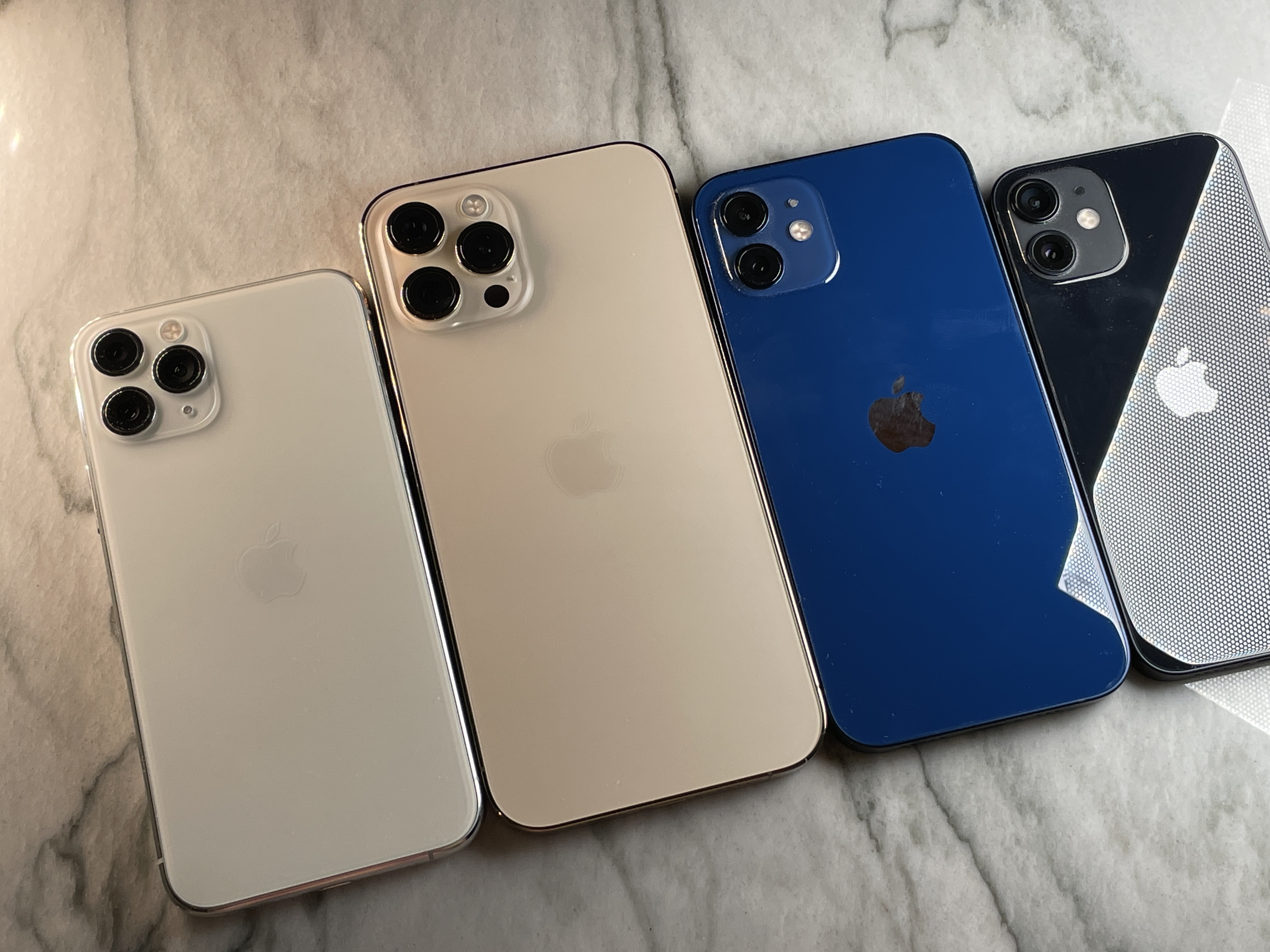

To be fair, Vertu and other makers didn’t die because Apple got good at gold, they died because good software is needed to invest life into these bejeweled golems. But Apple got better at what they did faster than they could ever get good at what Apple does.
This is a great piece of kit and as mentioned even smaller than previous Max models with the same size screen. But in my opinion, the squared off edges of this year’s aesthetic make this phone harder to hold, not easier at this size. This is essentially the opposite effect from the smaller models. For a phone this size I’d imagine everyone is going to use a case anyway so that’s probably moot, but it’s worth noting.
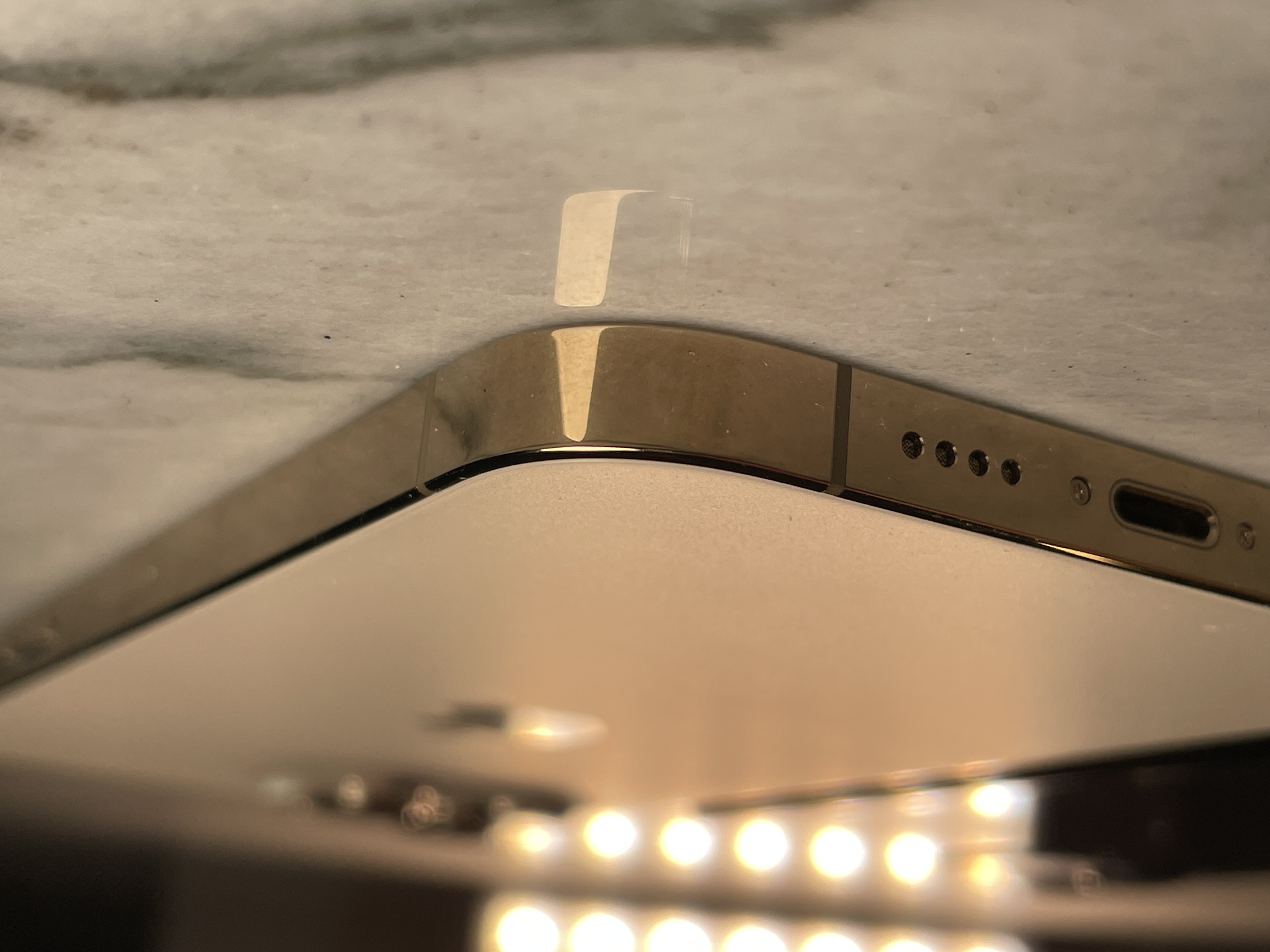

My feelings on the larger iPhones, which I haven’t used as a daily driver since the iPhone 8, remain unchanged: these are two-handed devices best used as tablet or even laptop replacements. If you run your life from these phones then it makes sense that you’d want a huge screen with plenty of real-estate for a browser and a pip video chat and a generous keyboard all at once.
The differences
When we’re talking about whether or not to move up to this beast I think it’s helpful to have a list of everything here that is different, or you think might be but isn’t, from the iPhone 12 Pro.
Screen. The 6.7” iPhone 12 Pro Max screen has a resolution of 2778×1284 at 458 ppi. That’s nearly identical but slightly under the iPhone 12 Pro’s 460ppi. So though this is a difference I’d count it as a wash. The screen’s size, of course, and the software support that some Apple and third-party apps to take advantage of the increased real-estate are still a factor.
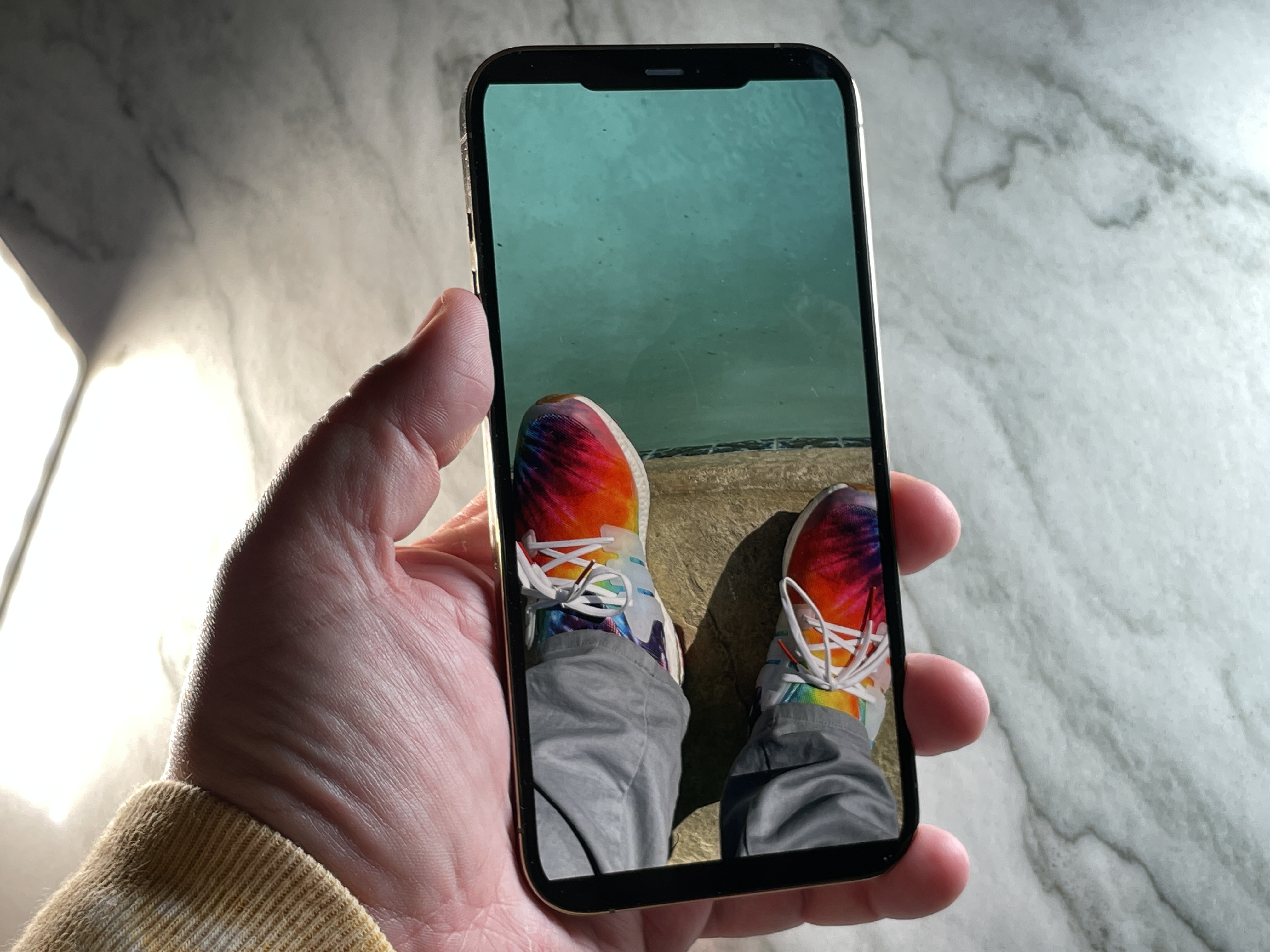

Performance. The iPhone 12 Pro Max performs exactly as you’d expect it to in the CPU and GPU department, which is to say exactly the same as the iPhone 12 Pro. It also has the same 6GB of RAM on board. Battery performance was comparable to my iPhone 11 Pro Max testing which is to say it outlasted a typical waking day though I could probably nail it in a long travel day.
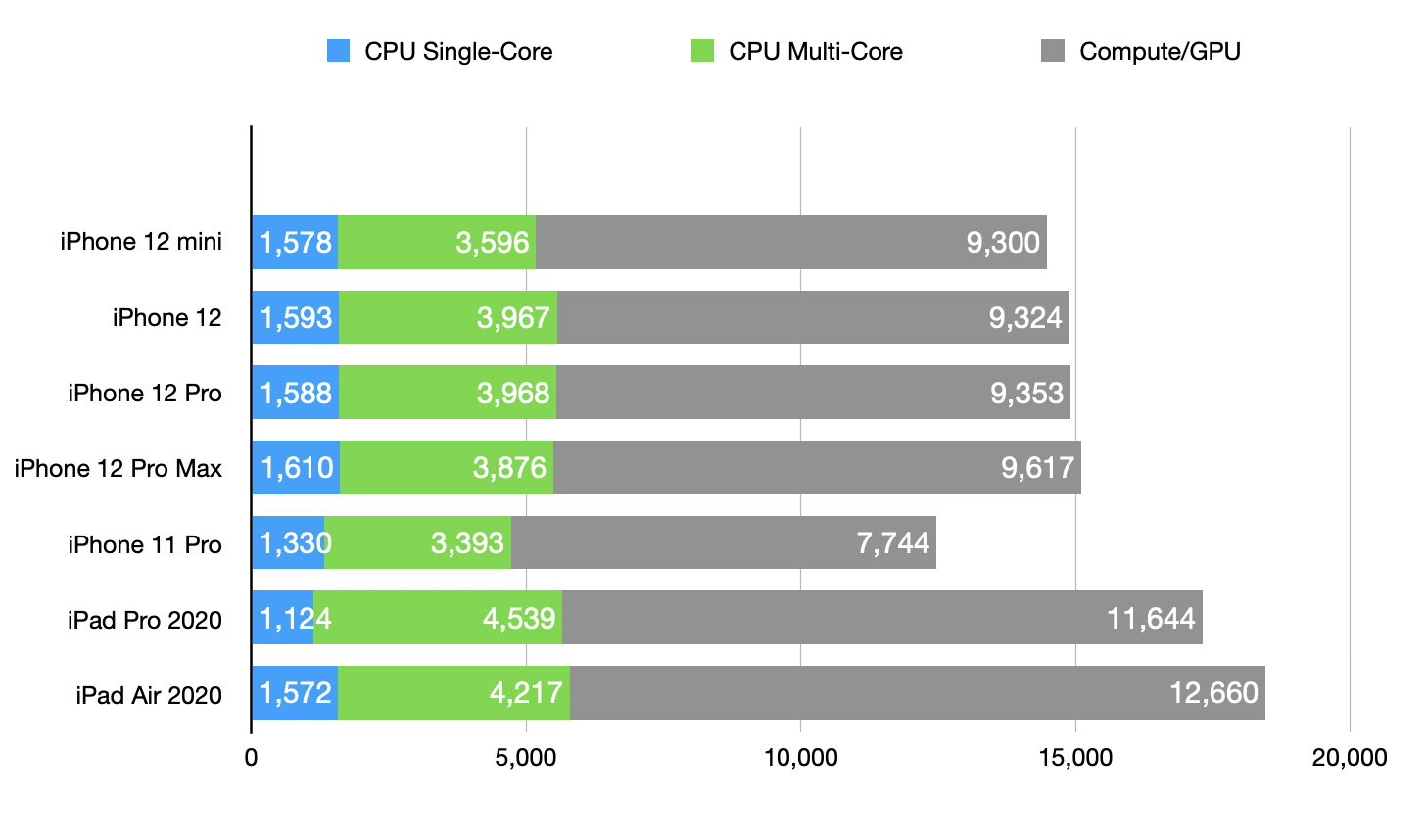

Ultra wide angle camera. Exactly the same. Improved over the iPhone 11 Pro massively due to software correction and the addition of Night Mode, but the same across the iPhone 12 Pro lineup.
Telephoto camera. This is a tricky one because it uses the same sensor as the iPhone 12 Pro, but features a new lens assembly that results in a 2.5x (65mm equivalent) zoom factor. This means that though the capture quality is the same, you can achieve tighter framing at the same distance away from your subject. As a heavy telephoto user (I shot around 30% of my pictures over the last year in the iPhone 11 Pro’s telephoto) I love this additional control and the slightly higher compression that comes with it.


The framing control is especially nice with portraits.


Though it comes in handy with distant subjects as well.
There is also one relatively stealthy (I cannot find this on the website but I verified that it is true) update to the telephoto. It is the only lens other than the wide angle across all of the iPhone 12 lineup to also get the new optical stabilization upgrades that allow it to make 5,000 micro-adjustments per second to stabilize an image in low light or shade. It still uses the standard lens-style stabilization, not the new sensor-shift OIS used in the wide angle lens, but it goes up 5x in the amount of adjustments it can make from the iPhone 11 Pro or even the iPhone 12 Pro.


The results of this can be seen in this shot, a handheld indoor snap. Aside from the tighter lens crop, the additional stabilization adjustments result in a crisper shot with finer detail even though the base sensor is identical. It’s a relatively small improvement in comparison to the wide angle, but it’s worth mentioning and worth loving if you’re a heavy telephoto user.
Wide angle camera. The bulk of the iPhone 12 Pro Max difference is right here. This is a completely new camera that pushes the boundaries of what the iPhone has been capable of shooting to this point. It’s actually made up of 3 big changes:
- A new f1.6 aperture camera. A larger aperture is plain and simple a bigger hole that lets more light in.
- A larger sensor with 1.7 micron pixels (bigger pixels mean better light gathering and color rendition), a larger sensor means higher quality images.
- An all-new sensor-shift OIS system that stabilizes the sensor, not the lens. This is advantageous for a few reasons. Sensors are lighter than lenses, which lets the adjustments happen faster because it can be moved, stopped and started again with more speed and precision.
Sensor-shift OIS systems are not new, they were actually piloted in the Minolta Dimage A1 back in 2003. But most phone cameras have used lens shift technology because it is very common, vastly cheaper and easier to implement.
All three things work together to deliver pretty stellar imaging results. It also makes the camera bump on the iPhone 12 Pro Max a bit taller. Tall enough that there is actually an additional lip on the case meant for it made by Apple to cover it. I’d guess that this additional thickness stems directly from the wide angle lens assembly needing to be larger to accommodate the sensor and new OIS mechanism and then Apple being unwilling to let one camera stick out further than any other.
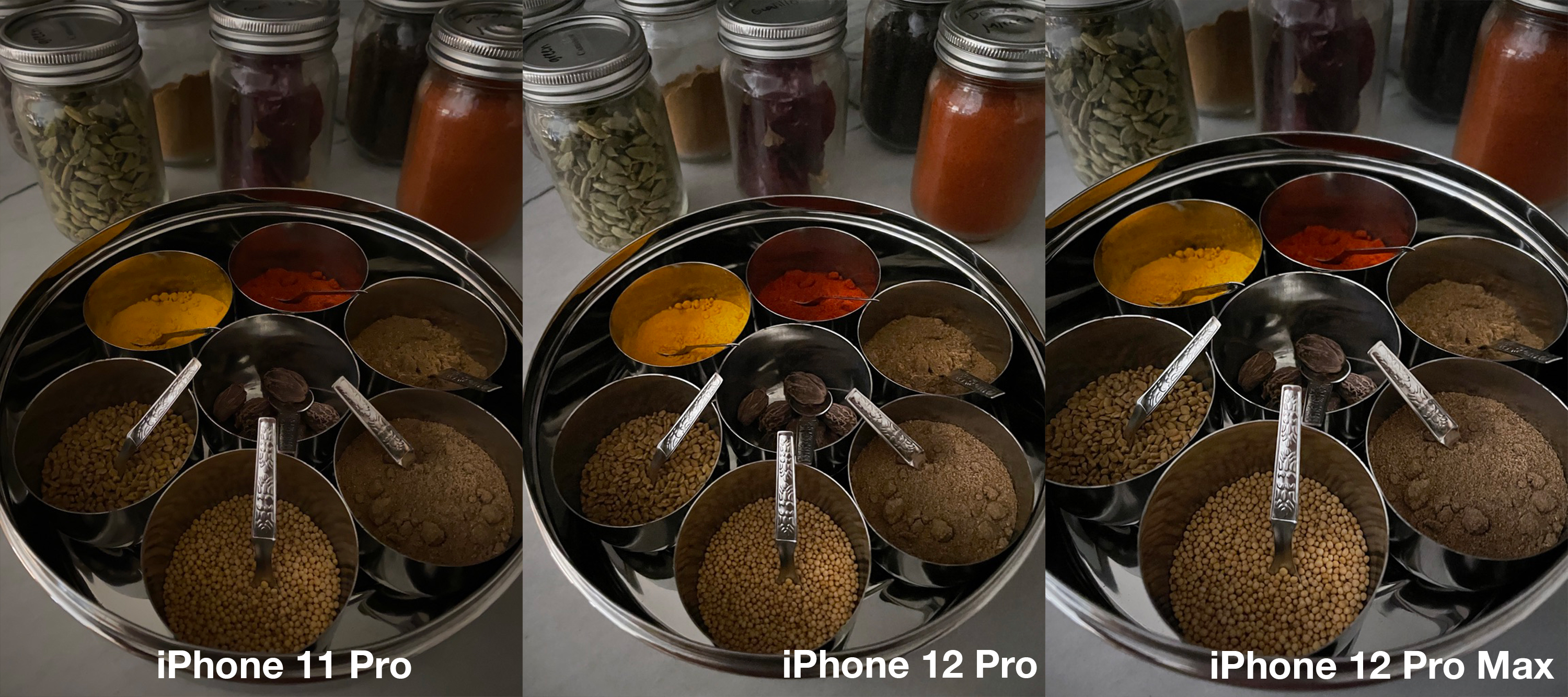

These are Night Mode samples, but even there you can see the improvements in brightness and sharpness. Apple claims 87% more light gathering ability with this lens and in the right conditions it’s absolutely evident. Though you won’t be shooting SLR-like images in near darkness (Night Mode has its limits and tends to get pretty impressionistic when it gets very dim) you can absolutely see the pathway that Apple has to get there if it keeps making these kinds of improvements.
Wide angle shots from the iPhone 12 Pro Max display slightly better sharpness, lower noise and better color rendition than the iPhone 12 Pro and much more improvement from the iPhone 11 Pro. In bright conditions you will be hard pressed to tell the difference between the two iPhone 12 models but if you’re on the lookout the signs are there. Better stabilization when handheld in open shade, better noise levels in dimmer areas and slightly improved detail sharpness.
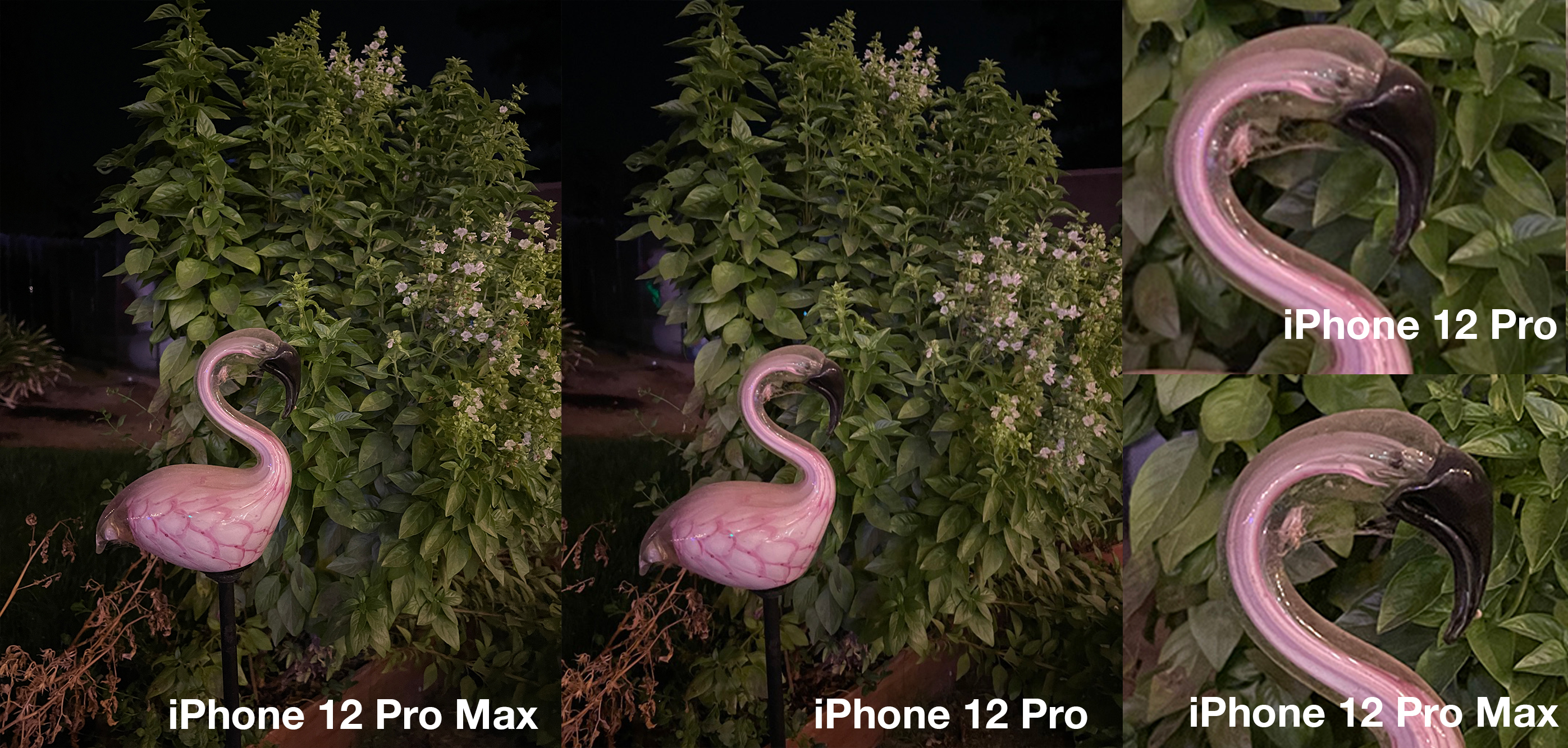

The iPhone 12 Pro already delivers impressive results year on year, but the iPhone 12 Pro Max leapfrogs it within the same generation. It’s the most impressive gain Apple’s ever had in a model year, image wise. The iPhone 7 Plus and the introduction of Apple’s vision of a blended camera array was forward looking, but even then image quality was pretty much parity with the smaller models that year.
A very significant jump this year. Can’t wait for this camera to trickle down the lineup.
LiDAR. I haven’t really mentioned LiDAR benefits yet, but I went over them extensively in my iPhone 12 Pro review, so I’ll cite them here.
LiDAR is an iPhone 12 Pro and iPhone 12 Pro Max only feature. It enables faster auto-focus lock-in in low light scenarios as well as making Portrait Mode possible on the Wide lens in Night Mode shots.


First, the auto-focus is insanely fast in low light. The image above is what is happening, invisibly, to enable that. The LiDAR array constantly scans the scene with an active grid of infrared light, producing depth and scene information that the camera can use to focus.
In practice, what you’ll see is that the camera snaps to focus quickly in dark situations where you would normally find it very difficult to get a lock at all. The LiDAR-assisted low light Portrait Mode is very impressive, but it only works with the Wide lens. This means that if you are trying to capture a portrait and it’s too dark, you’ll get an on-screen prompt that asks you to zoom out.
These Night Mode portraits are demonstrably better looking than the standard portrait mode of the iPhone 11 because those have to be shot with the telephoto, meaning a smaller, darker aperture. They also do not have the benefit of the brighter sensor or LiDAR helping to separate the subject from the background — something that gets insanely tough to do in low light with just RGB sensors.
As a note, the LiDAR features will work great in situations under 5 meters along with Apple’s Neural Engine, to produce these low-light portraits. Out beyond that it’s not much use because of light falloff.
Well lit Portrait Mode shots on the iPhone 12 Pro Max will still rely primarily on the information coming in through the lenses optically, rather than LiDAR. It’s simply not needed for the most part if there’s enough light.
The should I buy it workflow
I’m straight up copying a couple of sections for you now from my iPhone 12 Pro and iPhone 12 mini reviews because the advice applies across all of these devices. Fair warning.
In my iPhone 12/12 Pro review I noted my rubric for selecting a personal device:
- The most compact and unobtrusive shape.
- The best camera that I can afford.
And this is the conclusion I came to at the time:
The iPhone 12 Pro is bested in the camera department by the iPhone 12 Pro Max, which has the biggest and best sensor Apple has yet created. (But its dimensions are similarly biggest.) The iPhone 12 has been precisely cloned in a smaller version with the iPhone 12 mini. By my simple decision-making matrix, either one of those are a better choice for me than either of the models I’ve tested. If the object becomes to find the best compromise between the two, the iPhone 12 Pro is the pick.
But now that I’ve had time with the Pro Max and the mini, I’ve been able to work up a little decision flow for you:
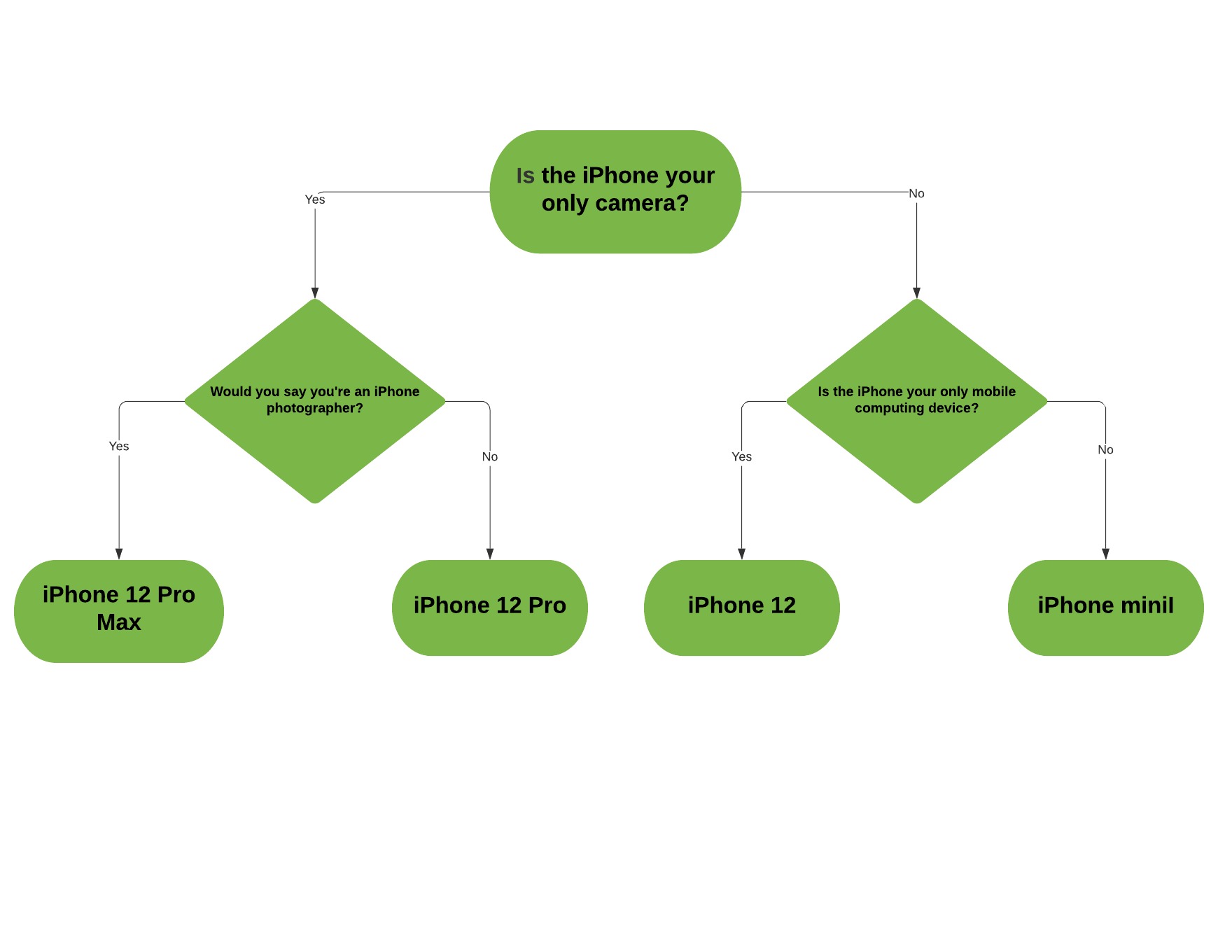

If you haven’t gathered it by now, I recommend the iPhone 12 Pro Max to two kinds of people: the ones who want the absolute best camera quality on a smartphone period and those who do the bulk of their work on a phone rather than on another kind of device. There is a distinct ‘fee’ that you pay in ergonomics to move to a Max iPhone. Two hands are just plain needed for some operations and single-handed moves are precarious at best.
Of course, if you’re already self selected into the cult of Max then you’re probably just wondering if this new one is worth a jump from the iPhone 11 Pro Max. Shortly: maybe not. It’s great but it’s not light years better unless you’re doing photography on it. Anything older though and you’re in for a treat. It’s well made, well equipped and well priced. The storage upgrades are less expensive than ever and it’s really beautiful.
Plus, the addition of the new wide angle to the iPhone 12 Pro Max makes this the best camera system Apple has ever made and quite possibly the best sub compact camera ever produced. I know, I know, that’s a strong statement but I think it’s supportable because the iPhone is best in class when it comes to smartphones, and no camera company on the planet is doing the kind of blending and computer vision Apple is doing. Though larger sensor compact cameras still obliterate the iPhone’s ability to shoot in low light situations, the progress over time of Apple’s ML-driven blended system.
A worthy upgrade, if you can pay the handling costs.
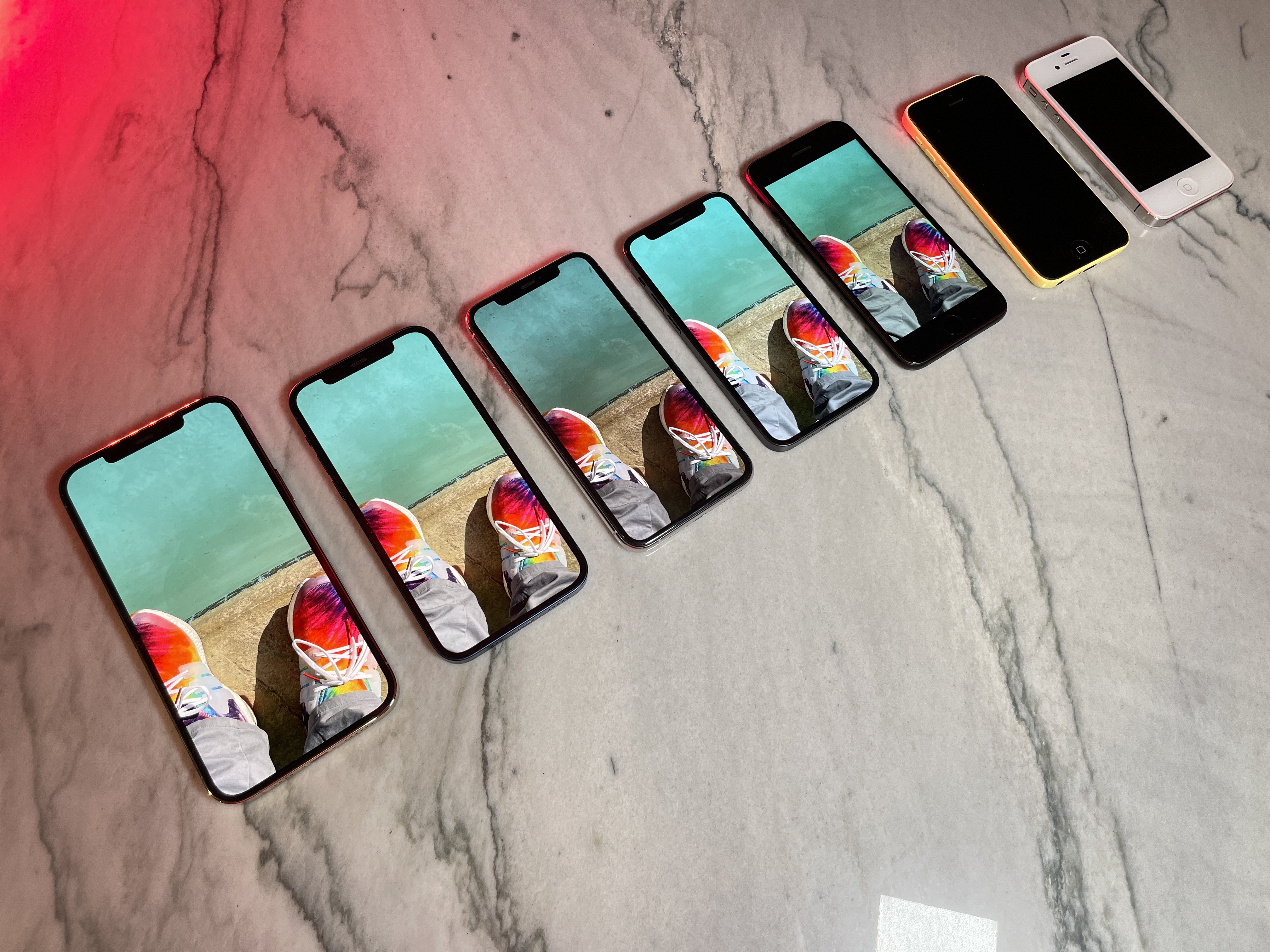

]]>
TechCrunch
TechCrunch
Disclosure: TechCrunch was provided consoles from both Microsoft and Sony ahead of release, as well as a handful of titles from first and third-party publishers.
In accordance with an elaborate (and ongoing!) series of embargoes for different features and games, impressions have been trickling out about the new platforms for a month now. For a launch that’s already lacking impact, this may have further blunted excitement: Few gamers will get excited when all anyone can write about is the exterior of the console itself, or the first level of the pack-in game. Some features wouldn’t even be available before launch, or are prohibited from coverage until long afterwards, leaving reviewers wondering whether day-one changes would make obsolete any impressions they had. (I’ll update this review when new information comes to light, or link to future coverage.)
But whatever the case, the shackles are finally removed and now we can talk about most (but not all) the new consoles have to offer. Unfortunately it’s… not that much. Despite the companies’ attempts to hype the next generation as a huge leap, there’s simply no evidence of that at launch and probably won’t be for many months.
That doesn’t mean the new platforms are a flop — or even that they aren’t great. But the new generation is a lot like the old one, and compatibility with it is actually the biggest thing the PS5 and Series X have going for them for the opening stretch. Here’s what I can tell you honestly about my time with the PS5.
The hardware: Conversation piece
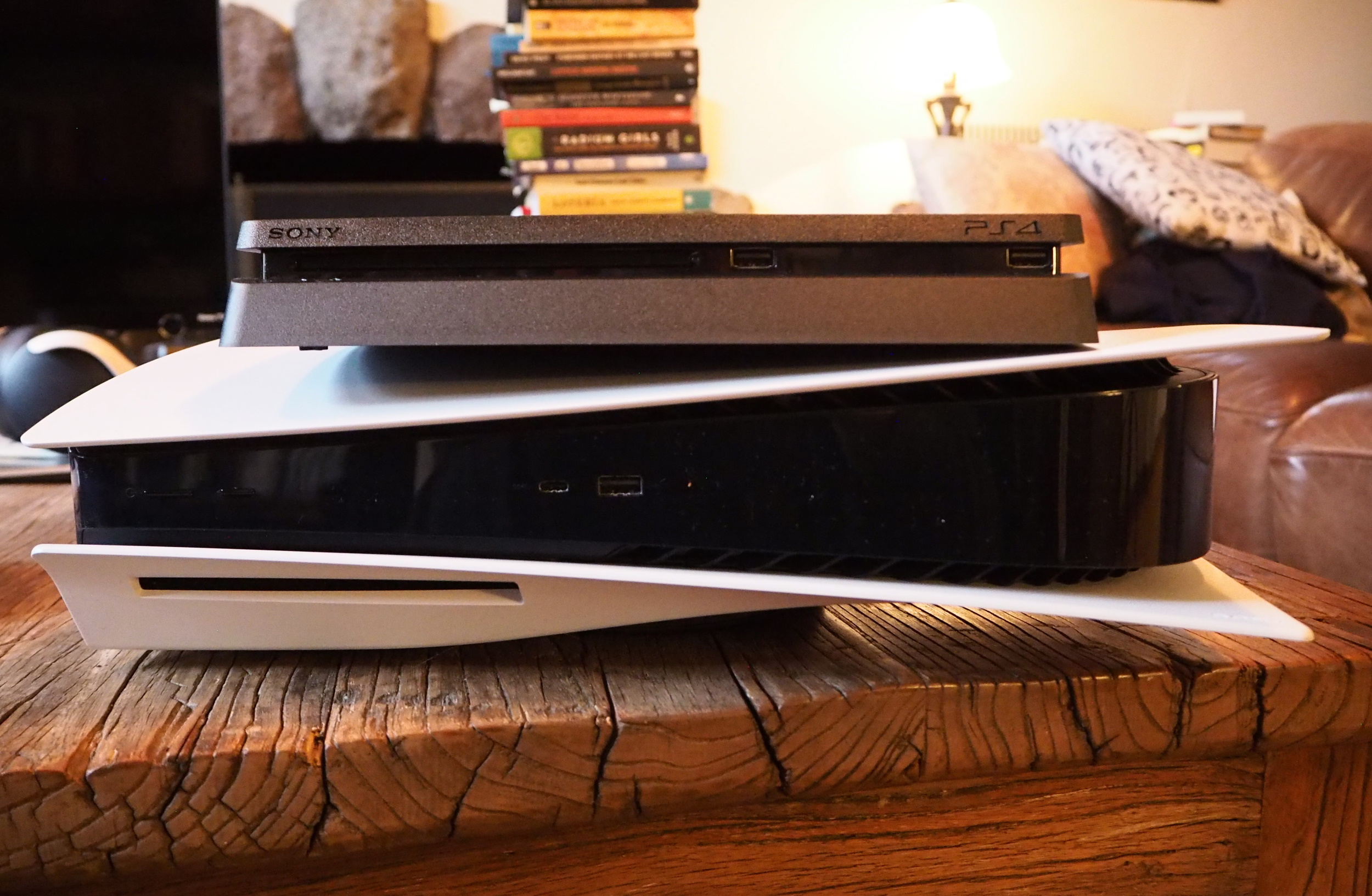


As you can see, the PS5 is CONSIDERABLY larger than the PS4 Slim. Image Credits: Devin Coldewey / TechCrunch
The PS5 is a strange-looking beast, but I’ll give it this: No one is going to mistake it for any other gaming console. Though they may think it’s an air purifier.
The large, curvy device likely won’t fit with anyone’s decor, so it may be best to just bite the bullet and display it prominently (fortunately it sits comfortably vertically or on a stand horizontally). I look forward to getting custom shields for the side to make this thing a little less prominent.
The console is fairly quiet while playing games, but you’ll probably want it at least a few feet away from you, especially if you’re going to play with a disc, which is much louder than normal operation.
As for performance, it’s really impossible to say. The only “next-gen” (really cross-gen) game I got to play much of was Spider-Man: Miles Morales, and while it looked great (more impressions below), it’s incredibly hard to make any substantive comment on the machine’s computing and rendering chops.
The prospect of gaming in 4K and HDR, and of advanced techniques like ray tracing changing how games look, is an exciting one. But in the first place you need a TV setup that’s capable of taking advantage of these features, and in the second — to be perfectly honest, they’re not all they’re cracked up to be. A high-quality 1080p TV from the last couple years will look very nearly as good despite not supporting Dolby Vision or what have you. (I know because I got a new TV during the review period. They both looked great.)
Load times — a factor of the much-lauded custom SSD in this thing — are similarly hard to evaluate, though certainly going from menu to game in Miles Morales was fast, fast-traveling faster, and the previous game was faster to load than on my regular PS4. This benefit will of course vary from game to game, however — some developers are announcing their performance gains publicly, while others with less impressive ones may just let sleeping dogs lie. Without more titles to get a feel for the console’s performance improvements, right now you’ll have to take Sony’s word on things.
The controller: DualSense makes sense
One place where Sony is attempting to advance the ball is in the new DualSense controller.
Not in the shape and color and slick, transparent buttons — those are not so hot. It feels like a DualShock that’s let itself go a bit, and I’m definitely not a fan of the “PS” shaped PlayStation button. This thing feels like a grime magnet.
And not in the built-in speaker and microphone, either; I struggle to think of any application for these that wouldn’t be better served by a headset or avoided altogether.
What’s actually a clear and impressive upgrade is the triggers, which feature incredibly precise mechanical resistance that serves all kinds of gameplay functions and sets the imagination running.
The new triggers are connected to a set of gears that impart actual pressure against your fingers, from a very light tap to, presumably (though I haven’t experienced it), actually pushing your fingers back.
The range is wide and it can impart the pressure anywhere along the trigger’s range, giving interesting effects like (the obvious one in violent games) resistance while you pull a gun’s trigger, which then clicks and releases when it fires. In Miles Morales, the triggers act as a very sensitive rumble, but also give you tactile feedback when you’re swinging, telling you when you’ve made contact and so on.
Honestly, I love it. I want to play games that use it well. I don’t want to play games that don’t have it! Hopefully developers will embrace the variable-resistance triggers, because it genuinely adds something to the experience and, if I’m not mistaken, even has the potential to make games more accessible.
The UI: More is more
The PS4’s interface had the illusion of simplicity, and the PS5 continues that with two steps forward and one step back.
For one thing, separating out the “games” and “media” portions of the machine is a smart move. As OTT apps and streaming services proliferate, they take up more and more space and it makes perfect sense to isolate them.
As for the games side, it’s similar to the PS4 in that it’s a horizontal line that you click through, and when a game is highlighted it “takes over” the screen with a background, the latest news, achievements and so on. As before it works perfectly well.
Previously, when you pressed the PlayStation button, you’d return to the main menu and pause whatever you were playing. If you held down the button, it opened an in-game side menu where you could invite friends, turn off the console and other common tasks.
The PS5 reverses that: The long press now returns you to the home screen, while a short press brings up the in-game menu (now a row of tiny icons on the bottom of the screen — not a fan of this change).
The in-game menu now sports an in-depth “card” system that, while cool in theory, seems like one of those things that will not actually be used to great effect. The giant cards show recent screenshots and achievements, friend activity and, if the developer has enabled it, info about your current mission or game progress.
For instance, in Miles Morales, hitting pause told me I was 22% of the way through a side mission to rescue a bodega cat named Spider-Man, with an image of the bodega where I accepted it. Nice, but it’s redundant with the info presented in-game if I pause in the ordinary way. There’s more to it, though — the cards can also be used as “deep links” to game features like multiplayer, quests in progress, quick travel locations, even hints.
Sony showed off these advanced possibilities in a video of Sackboy: The Big Adventure, but since that game isn’t yet available I can’t yet speak to how well it works. More importantly, I can’t make any promises on behalf of developers, who may or may not integrate the system well. At the very least it could be nice, but I’m afraid it will be relegated to first-party games (of which Sony promises many), and be optional at that.
It’s hard to call the new UI an improvement over the old one — it’s different, in some ways more busy and in some ways streamlined. Where it may improve things is in reducing friction in things like organizing voice chat and joining friends’ games. But that capability wasn’t ready for launch.
A couple nice things I want to note: Setting up the PS5 to your own preferences is super easy. I downloaded my cloud saves in a minute or two, and there’s a great new settings page for things people often change in games: difficulty, language, inverting the camera and some other things. There are also accessibility options built-in: a screen reader, chat transcription and other goodies I wasn’t able to test but am glad to see.
The games: Well… the PS5 is the best PS4 you can buy
The chief reason for buying a new console is to play the new games on it. When the Switch came out, half the reason anyone bought it was to play the fabulous new Zelda. Sadly, the selection at this launch is laughably thin for both Sony and Microsoft fanboys.
As I noted above, the only game I was provided in time to get any real impressions (that I’m permitted to write about) was Spider-Man: Miles Morales. Having recently completed its predecessor on PS4, I can say that the new game looks and plays better, with shorter load times, improved lighting, more detailed buildings and so on. But the 2018 Spider-Man still looks and plays very well — this is the difference you’d expect in a sequel, not from one generation to the next. (To be clear, the PS5 version does look considerably better, it’s just not the night and day we’ve been led to expect.)



But that will also be coming out on the PS4… and Xbox One and Series X… In fact, almost all the big games of the next year will be.
They will, of course, play and look better on the PS5 than the PS4. But it’s a hard sell to tell someone to pay $500 so they can play the next Assassin’s Creed or Horizon: Zero Dawn in 4K HDR rather than 1080p.
Meanwhile, the few games you can only play on PS5 are for niche players. Sackboy looks to be a fun platformer but hardly a blockbuster; Demon’s Souls is my most anticipated title of the season, but a remake of a legendary but little-played and controller-bitingly difficult PS3 game isn’t going to break sales records; and Destruction All-Stars, an online-only racing battle royale game, got delayed until February, which suggests it’s not playing well.
Adding them all up there really isn’t much reason in terms of exclusives to pick the PS5 over the Xbox Series X or, at least for 2021, a PS4 Pro.
The good news is that the PS5 is now without question the best way to play the huge catalog of amazing PS4 games out there. Nearly all of them will look better, play better and load faster. Sony as much as admitted this when they bundled a dozen of the best games from the last generation with the PS5. Honestly, I’m looking forward to finally playing God of War (I know… don’t hassle me!) on this thing more than I am Assassin’s Creed: Valhalla.
Unfortunately I can’t speak to whether these PS4 games have much to speak of in terms of real improvements yet. As mentioned above, a lot of that depends on support from the developers. But as a simple test, loading the Central Yharnam area in Bloodborne took about 33 seconds on the PS4, and 16 on the PS5 (as you can see in the shots above, the game looks identical). I didn’t time them, but anecdotally other games showed improvements as well.
The verdict: The must-have console for the 2021 holidays
No, that isn’t a typo. The PS5 (and I am joined in this opinion by our review of its rival, the Xbox Series X) simply isn’t a console anyone should rush out and purchase for any reason. Not least of which because it will be near-impossible to get one in the next month or so, making the possibility of unwrapping a PS5 a remote one for eager youths.
The power of the next generation is not much on display in any of the titles I have been able to play, and while a handful of upcoming games may show off its advantages, those games will likely play just as well on the other platforms they’re being released on.
Nor are there any compelling new features that make the PS5 feel truly next-gen, with the possible exception of the variable resistance triggers (the Series X has multi-game suspension at least, and I’d be jealous if there were any games to switch between). For the next 6-8 months, the PS5 will merely be the best way to play the same games everyone else is playing, or has been playing for years, but in 4K. That’s it!
The rush by Sony and Microsoft to get these consoles out by the holidays this year simply didn’t have the support of the publishers and developers that make the games that make consoles worth having. That will change late next year as the actual next-gen titles and meaningful exclusives start to appear. And a year from now the PS5 and Series X will truly be must-haves, because there will be things that are only available for them.
I’m not saying buy your kid a PS4 Pro for Christmas. And I’m not saying the PS5 isn’t a great way to play games. I’m just saying that outside some slight differences that many gamers don’t even have the setup to notice, there’s no reason to run out and buy a PS5 right now. Relax and enjoy the latest, greatest games on your old PS4 in confidence, knowing that you’ll save $50 when a Cyberpunk 2077 bundle goes on sale in the summer.
So don’t feel bad if you can’t lay your hands on a PS5 to keep you entertained this winter — a PS4 will do you just fine for the present while the next generation makes its lazy way toward the consoles it will eventually grace.
]]>
TechCrunch
TechCrunch
Disclosure: TechCrunch was provided consoles from both Microsoft and Sony ahead of release, as well as a handful of titles from first and third-party publishers.
In accordance with an elaborate (and ongoing!) series of embargoes for different features and games, impressions have been trickling out about the new platforms for a month now. For a launch that’s already lacking impact, this may have further blunted excitement: Few gamers will get excited when all anyone can write about is the exterior of the console itself, or the first level of the pack-in game. Some features wouldn’t even be available before launch, or are prohibited from coverage until long afterwards, leaving reviewers wondering whether day-one changes would make obsolete any impressions they had. (I’ll update this review when new information comes to light, or link to future coverage.)
But whatever the case, the shackles are finally removed and now we can talk about most (but not all) the new consoles have to offer. Unfortunately it’s… not that much. Despite the companies’ attempts to hype the next generation as a huge leap, there’s simply no evidence of that at launch and probably won’t be for many months.
That doesn’t mean the new platforms are a flop — or even that they aren’t great. But the new generation is a lot like the old one, and compatibility with it is actually the biggest thing the PS5 and Series X have going for them for the opening stretch. Here’s what I can tell you honestly about my time with the PS5.
The hardware: Conversation piece



As you can see, the PS5 is CONSIDERABLY larger than the PS4 Slim. Image Credits: Devin Coldewey / TechCrunch
The PS5 is a strange-looking beast, but I’ll give it this: No one is going to mistake it for any other gaming console. Though they may think it’s an air purifier.
The large, curvy device likely won’t fit with anyone’s decor, so it may be best to just bite the bullet and display it prominently (fortunately it sits comfortably vertically or on a stand horizontally). I look forward to getting custom shields for the side to make this thing a little less prominent.
The console is fairly quiet while playing games, but you’ll probably want it at least a few feet away from you, especially if you’re going to play with a disc, which is much louder than normal operation.
As for performance, it’s really impossible to say. The only “next-gen” (really cross-gen) game I got to play much of was Spider-Man: Miles Morales, and while it looked great (more impressions below), it’s incredibly hard to make any substantive comment on the machine’s computing and rendering chops.
The prospect of gaming in 4K and HDR, and of advanced techniques like ray tracing changing how games look, is an exciting one. But in the first place you need a TV setup that’s capable of taking advantage of these features, and in the second — to be perfectly honest, they’re not all they’re cracked up to be. A high-quality 1080p TV from the last couple years will look very nearly as good despite not supporting Dolby Vision or what have you. (I know because I got a new TV during the review period. They both looked great.)
Load times — a factor of the much-lauded custom SSD in this thing — are similarly hard to evaluate, though certainly going from menu to game in Miles Morales was fast, fast-traveling faster, and the previous game was faster to load than on my regular PS4. This benefit will of course vary from game to game, however — some developers are announcing their performance gains publicly, while others with less impressive ones may just let sleeping dogs lie. Without more titles to get a feel for the console’s performance improvements, right now you’ll have to take Sony’s word on things.
The controller: DualSense makes sense
One place where Sony is attempting to advance the ball is in the new DualSense controller.
Not in the shape and color and slick, transparent buttons — those are not so hot. It feels like a DualShock that’s let itself go a bit, and I’m definitely not a fan of the “PS” shaped PlayStation button. This thing feels like a grime magnet.
And not in the built-in speaker and microphone, either; I struggle to think of any application for these that wouldn’t be better served by a headset or avoided altogether.
What’s actually a clear and impressive upgrade is the triggers, which feature incredibly precise mechanical resistance that serves all kinds of gameplay functions and sets the imagination running.
The new triggers are connected to a set of gears that impart actual pressure against your fingers, from a very light tap to, presumably (though I haven’t experienced it), actually pushing your fingers back.
The range is wide and it can impart the pressure anywhere along the trigger’s range, giving interesting effects like (the obvious one in violent games) resistance while you pull a gun’s trigger, which then clicks and releases when it fires. In Miles Morales, the triggers act as a very sensitive rumble, but also give you tactile feedback when you’re swinging, telling you when you’ve made contact and so on.
Honestly, I love it. I want to play games that use it well. I don’t want to play games that don’t have it! Hopefully developers will embrace the variable-resistance triggers, because it genuinely adds something to the experience and, if I’m not mistaken, even has the potential to make games more accessible.
The UI: More is more
The PS4’s interface had the illusion of simplicity, and the PS5 continues that with two steps forward and one step back.
For one thing, separating out the “games” and “media” portions of the machine is a smart move. As OTT apps and streaming services proliferate, they take up more and more space and it makes perfect sense to isolate them.
As for the games side, it’s similar to the PS4 in that it’s a horizontal line that you click through, and when a game is highlighted it “takes over” the screen with a background, the latest news, achievements and so on. As before it works perfectly well.
Previously, when you pressed the PlayStation button, you’d return to the main menu and pause whatever you were playing. If you held down the button, it opened an in-game side menu where you could invite friends, turn off the console and other common tasks.
The PS5 reverses that: The long press now returns you to the home screen, while a short press brings up the in-game menu (now a row of tiny icons on the bottom of the screen — not a fan of this change).
The in-game menu now sports an in-depth “card” system that, while cool in theory, seems like one of those things that will not actually be used to great effect. The giant cards show recent screenshots and achievements, friend activity and, if the developer has enabled it, info about your current mission or game progress.
For instance, in Miles Morales, hitting pause told me I was 22% of the way through a side mission to rescue a bodega cat named Spider-Man, with an image of the bodega where I accepted it. Nice, but it’s redundant with the info presented in-game if I pause in the ordinary way. There’s more to it, though — the cards can also be used as “deep links” to game features like multiplayer, quests in progress, quick travel locations, even hints.
Sony showed off these advanced possibilities in a video of Sackboy: The Big Adventure, but since that game isn’t yet available I can’t yet speak to how well it works. More importantly, I can’t make any promises on behalf of developers, who may or may not integrate the system well. At the very least it could be nice, but I’m afraid it will be relegated to first-party games (of which Sony promises many), and be optional at that.
It’s hard to call the new UI an improvement over the old one — it’s different, in some ways more busy and in some ways streamlined. Where it may improve things is in reducing friction in things like organizing voice chat and joining friends’ games. But that capability wasn’t ready for launch.
A couple nice things I want to note: Setting up the PS5 to your own preferences is super easy. I downloaded my cloud saves in a minute or two, and there’s a great new settings page for things people often change in games: difficulty, language, inverting the camera and some other things. There are also accessibility options built-in: a screen reader, chat transcription and other goodies I wasn’t able to test but am glad to see.
The games: Well… the PS5 is the best PS4 you can buy
The chief reason for buying a new console is to play the new games on it. When the Switch came out, half the reason anyone bought it was to play the fabulous new Zelda. Sadly, the selection at this launch is laughably thin for both Sony and Microsoft fanboys.
As I noted above, the only game I was provided in time to get any real impressions (that I’m permitted to write about) was Spider-Man: Miles Morales. Having recently completed its predecessor on PS4, I can say that the new game looks and plays better, with shorter load times, improved lighting, more detailed buildings and so on. But the 2018 Spider-Man still looks and plays very well — this is the difference you’d expect in a sequel, not from one generation to the next. (To be clear, the PS5 version does look considerably better, it’s just not the night and day we’ve been led to expect.)



But that will also be coming out on the PS4… and Xbox One and Series X… In fact, almost all the big games of the next year will be.
They will, of course, play and look better on the PS5 than the PS4. But it’s a hard sell to tell someone to pay $500 so they can play the next Assassin’s Creed or Horizon: Zero Dawn in 4K HDR rather than 1080p.
Meanwhile, the few games you can only play on PS5 are for niche players. Sackboy looks to be a fun platformer but hardly a blockbuster; Demon’s Souls is my most anticipated title of the season, but a remake of a legendary but little-played and controller-bitingly difficult PS3 game isn’t going to break sales records; and Destruction All-Stars, an online-only racing battle royale game, got delayed until February, which suggests it’s not playing well.
Adding them all up there really isn’t much reason in terms of exclusives to pick the PS5 over the Xbox Series X or, at least for 2021, a PS4 Pro.
The good news is that the PS5 is now without question the best way to play the huge catalog of amazing PS4 games out there. Nearly all of them will look better, play better and load faster. Sony as much as admitted this when they bundled a dozen of the best games from the last generation with the PS5. Honestly, I’m looking forward to finally playing God of War (I know… don’t hassle me!) on this thing more than I am Assassin’s Creed: Valhalla.
Unfortunately I can’t speak to whether these PS4 games have much to speak of in terms of real improvements yet. As mentioned above, a lot of that depends on support from the developers. But as a simple test, loading the Central Yharnam area in Bloodborne took about 33 seconds on the PS4, and 16 on the PS5 (as you can see in the shots above, the game looks identical). I didn’t time them, but anecdotally other games showed improvements as well.
The verdict: The must-have console for the 2021 holidays
No, that isn’t a typo. The PS5 (and I am joined in this opinion by our review of its rival, the Xbox Series X) simply isn’t a console anyone should rush out and purchase for any reason. Not least of which because it will be near-impossible to get one in the next month or so, making the possibility of unwrapping a PS5 a remote one for eager youths.
The power of the next generation is not much on display in any of the titles I have been able to play, and while a handful of upcoming games may show off its advantages, those games will likely play just as well on the other platforms they’re being released on.
Nor are there any compelling new features that make the PS5 feel truly next-gen, with the possible exception of the variable resistance triggers (the Series X has multi-game suspension at least, and I’d be jealous if there were any games to switch between). For the next 6-8 months, the PS5 will merely be the best way to play the same games everyone else is playing, or has been playing for years, but in 4K. That’s it!
The rush by Sony and Microsoft to get these consoles out by the holidays this year simply didn’t have the support of the publishers and developers that make the games that make consoles worth having. That will change late next year as the actual next-gen titles and meaningful exclusives start to appear. And a year from now the PS5 and Series X will truly be must-haves, because there will be things that are only available for them.
I’m not saying buy your kid a PS4 Pro for Christmas. And I’m not saying the PS5 isn’t a great way to play games. I’m just saying that outside some slight differences that many gamers don’t even have the setup to notice, there’s no reason to run out and buy a PS5 right now. Relax and enjoy the latest, greatest games on your old PS4 in confidence, knowing that you’ll save $50 when a Cyberpunk 2077 bundle goes on sale in the summer.
So don’t feel bad if you can’t lay your hands on a PS5 to keep you entertained this winter — a PS4 will do you just fine for the present while the next generation makes its lazy way toward the consoles it will eventually grace.
]]>
TechCrunch
TechCrunch
The video app has redirected some hashtags — including #RiggedElection, #SharpieGate and others — where users have been publishing election misinformation. And it has taken down various videos making claims of “election fraud.”
However, based on our scans of the app and other election-related hashtags today, it’s clear that it’s still an uphill battle for TikTok in terms of getting a handle on violating content.
Because of TikTok’s size and scale, even smaller videos from unknown publishers can rack up thousands of views before they disappear.
Media Matters, for example, reported yesterday it was able to identify 11 examples of election misinformation spreading across TikTok, with more than 200,000 combined views. The videos shared conspiracies that ranged from unfounded “magic ballot” narratives to the completely untrue allegations that Arizona poll workers handed out markers to Trump voters so their votes wouldn’t count.
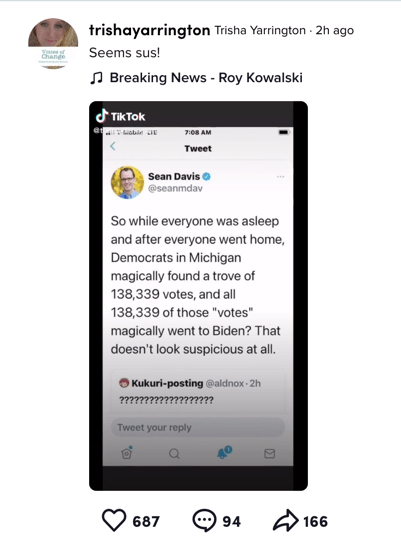

Image Credits: TikTok screenshot via Media Matters
TikTok says all the videos Media Matters reported have since been removed except one where a user made a premature declaration of victory. That one was shadowbanned — meaning its discoverability on the platform was reduced. It also has a banner pointing to authoritative information about the election results.
These individual takedowns are a drop in the bucket compared to the number of videos that are still out there making claims of election fraud. And, so far, TikTok has only removed a small number of hashtags on this subject.
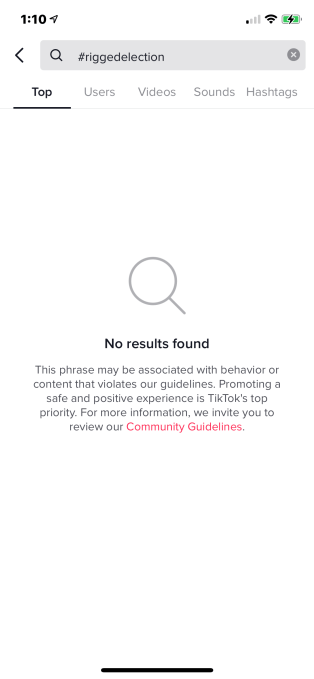

Image Credits: TikTok screenshot via TechCrunch
TikTok confirmed it has removed content and redirected searches for the hashtag #RiggedElection as of yesterday. Now, when you try to find videos flagged with this term in the app, you’ll get to a blank page with a notification that says the search term “may be associated with behavior or content that violates our guidelines.” The page also provides a link to TikTok’s Community Guidelines.
“Promoting a safe and positive experience is TikTok’s top priority,” the message reads.
This is the same playbook that TikTok recently used to address the spread of QAnon-related content on its platform. By redirecting searches and hashtags, it makes misinformation harder to find.
While TikTok declined to share an exhaustive list of hashtags it has taken action on during the elections, we found a few hashtags that returned either no results — like #RiggedElection and #SharpieGate — as well as those that returned only a small handful videos, or what TikTok considers “counter speech.”
The TikTok community will often create videos with counter speech or other content related to a misinformation-related hashtag. In these videos, they’ll provide factual information or will dispute the claims being made in another video. TikTok says this sort of counter speech doesn’t violate its policies. That’s why you may see videos listed under hashtags that would otherwise be associated with misinformation, as opposed to seeing the hashtag entirely silenced.
We also found some lesser-used hashtags like #RepealtheSteal and #VeritasArmy, which have been seen on Twitter, were not showing on TikTok at all. (However, upon reaching out to TikTok, the company chose to redirect these hashtags, too.)
A popular misinfo hashtag, #StoptheSteal, was also not available, but its variation, #StoptheStealing, had seven videos.
Many other hashtags were being used, too, as of the time of writing, including #VoterFraud (and its misspelling #VoterFruad), #DemsCheat, #CorruptElection, #ElectionCorruption, #StoptheStealing, #ElectionFraud (and misspelling #ElectionFruad), #CrookedJoeBiden, #CrookedDems, #Fraud (and its misspelling #Fruad), #Rigged, #Rigged2020, #MailinBallots, #CoupdEtat, #ElectionMeddling, #DemocratsAreDestroyingAmerica and #BallotHarvesting, to name a few.
While some hashtags had little content, many were filled with videos that weren’t just expressing their political views — they were making claims of election fraud. Combined, these hashtags have tens of millions of views, or even more.


Image Credits: TikTok screenshot, video republished previously removed content; screenshot via TechCrunch
For example, when we searched for the hashtag #VoterFraud (20.9 million views), we first encountered videos posted in the months leading up to Election Day that were responding to the Republican-driven claims of voter fraud associated with mail-in ballots.
But many videos under this hashtag have been published by Trump supporters this week, and are videos where the supporters are directly disputing the election results.
Among the videos we found were those reposting videos TikTok had already taken down. These included videos featuring Trump supporters’ protests against or for the counting of ballots in various states, calling them proof of election fraud.
In other videos, users opine about how Trump’s lawsuits will prove fraud took place and win him re-election. They sometimes use screenshots of website vote tallies as their “proof.”


Image Credits: TikTok app screenshot via TechCrunch
We also saw videos using text labels overtop their video footage. The text was used to make their claims of election fraud, while the video itself may have them talking in more measured terms about their disappointment with the election results. (It’s unclear if this is a viable workaround to avoiding rule enforcement, however.)
TikTok says its list of blocked hashtags continually grows as new terms and phrases emerge and it’s able to determine how the terms are being used on its platform. It also said it block more election misinformation hashtags in the hours, days and weeks to come.
To be clear, TikTok’s decision to keep this sort of content online doesn’t make it much different from other social networks.
During election season, Facebook and Twitter have taken to labeling election misinformation from high-profile accounts (like Trump’s). Facebook even ran in-app notifications to inform users that votes are still being counted. But both platforms today still easily allow users to click through on a wide range of hashtags that promote this idea of election fraud or rigged results.
TikTok may not much be doing much better, overall, in addressing the sizable amount of content promoting election misinformation on its video network. But TikTok’s ban of top election misinformation hashtags works differently from hashtag bans on other social networks.
Once TikTok has made the decision to ban a term like “SharpieGate,” for example, the content won’t be surfaced whether you use the hashtag symbol (#) itself or not. Facebook, on the other hand, may ban the hashtag specifically, but not the term entirely. That means you can still find content about SharpieGate on its platform — even if it’s largely posts and videos from news organizations.
#SharpieGate was also among the hashtags Facebook began blocking today related to election misinformation. It also blocked #StoptheSteal and a related group.
]]>




